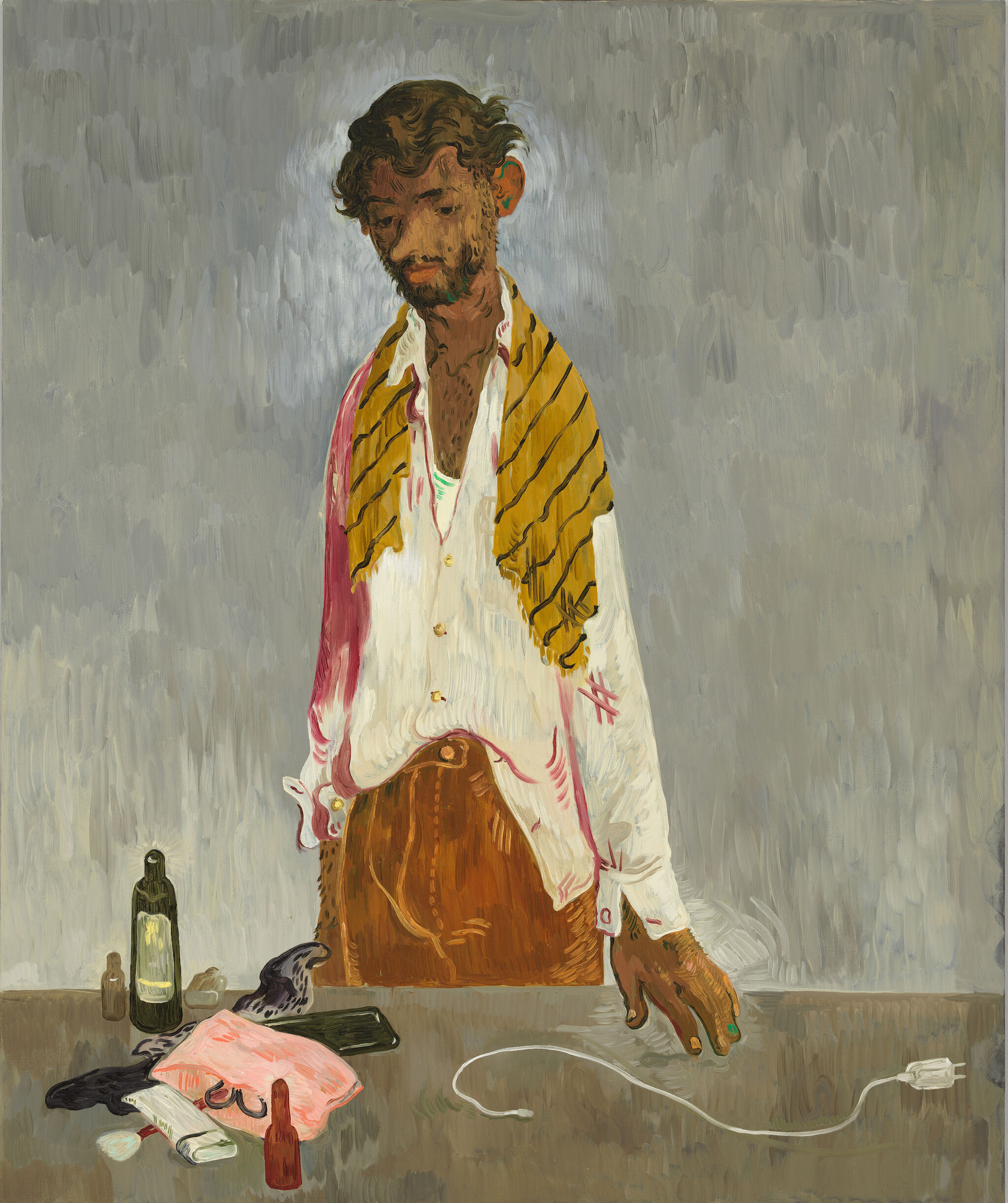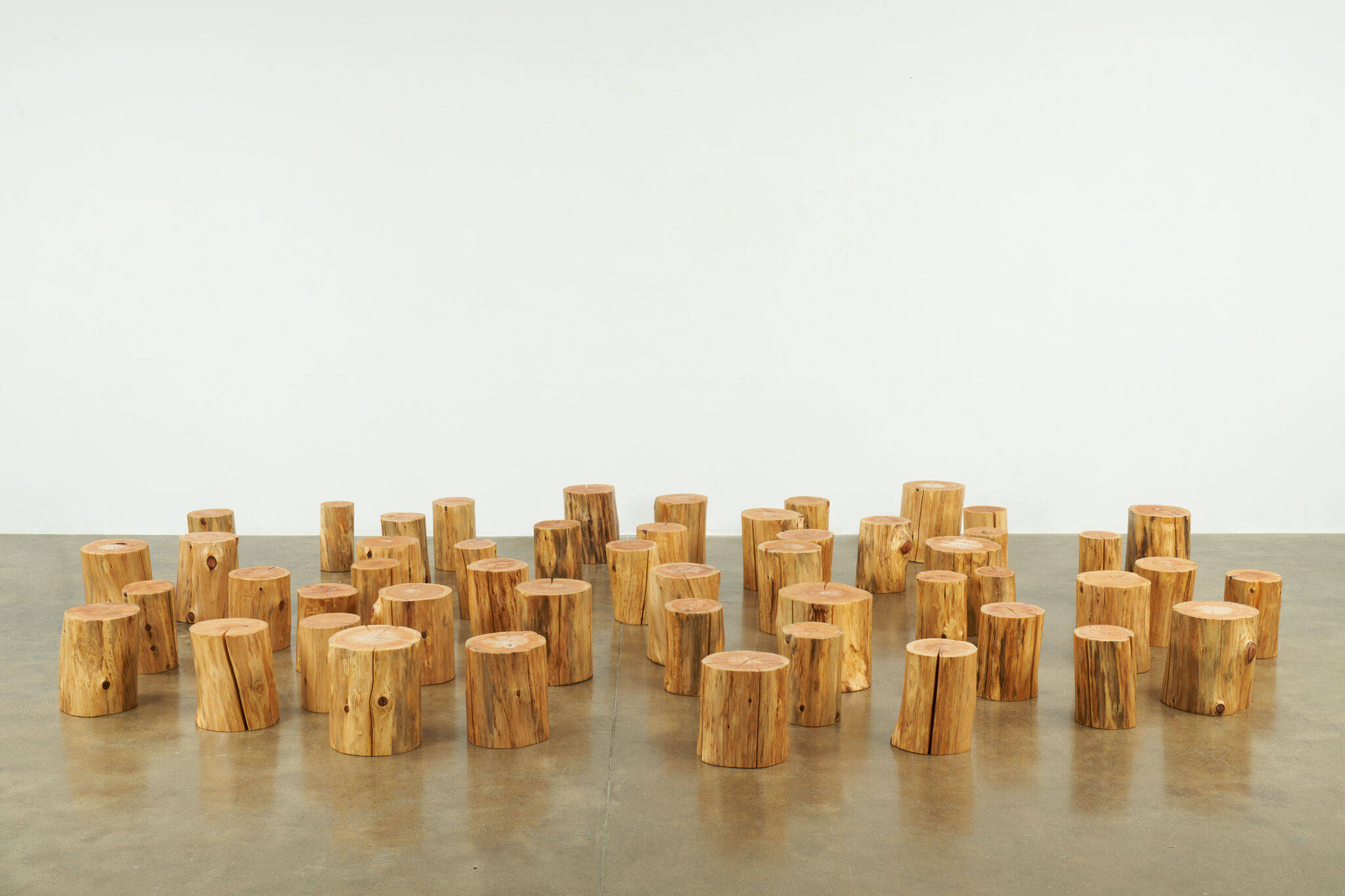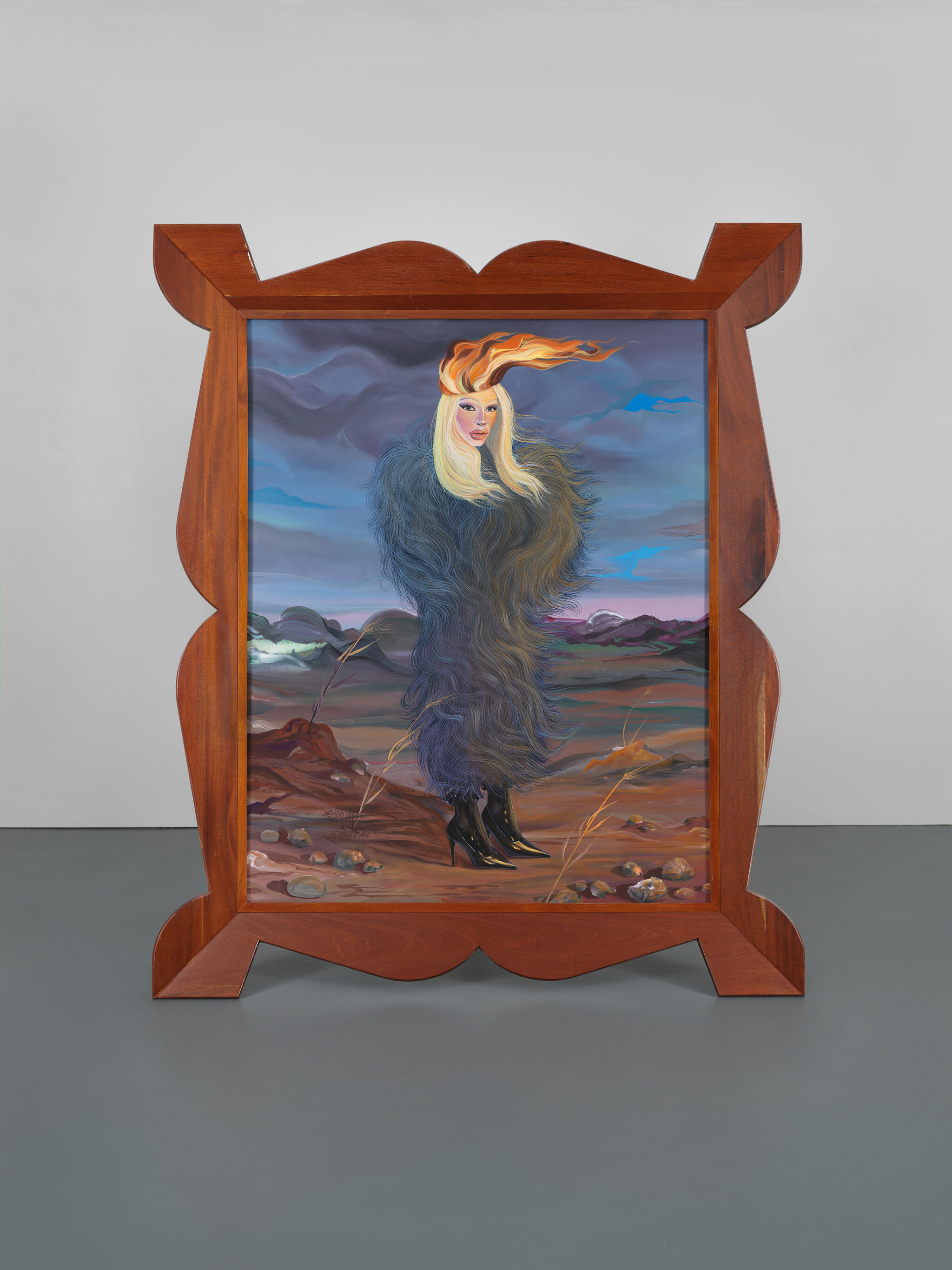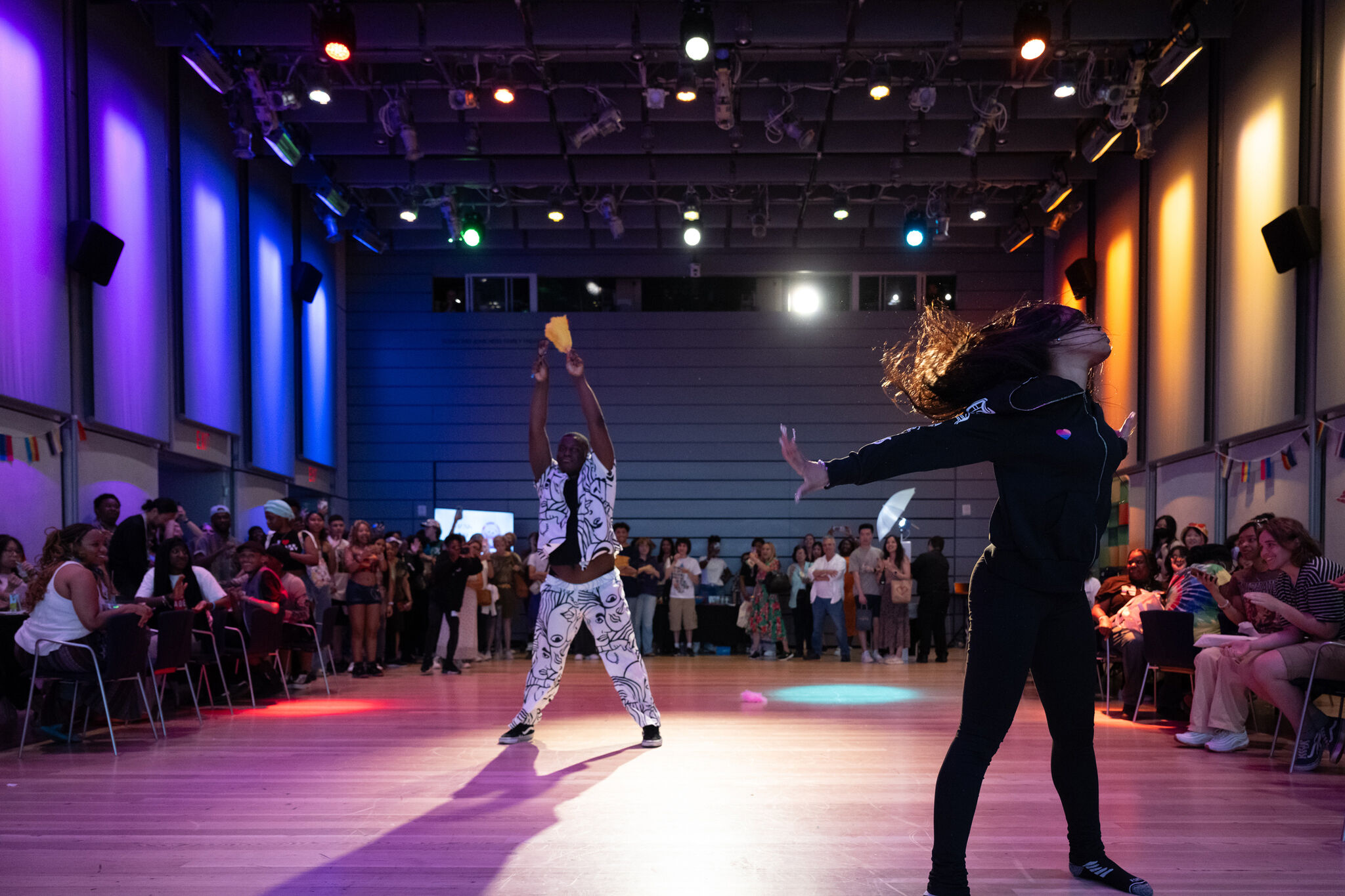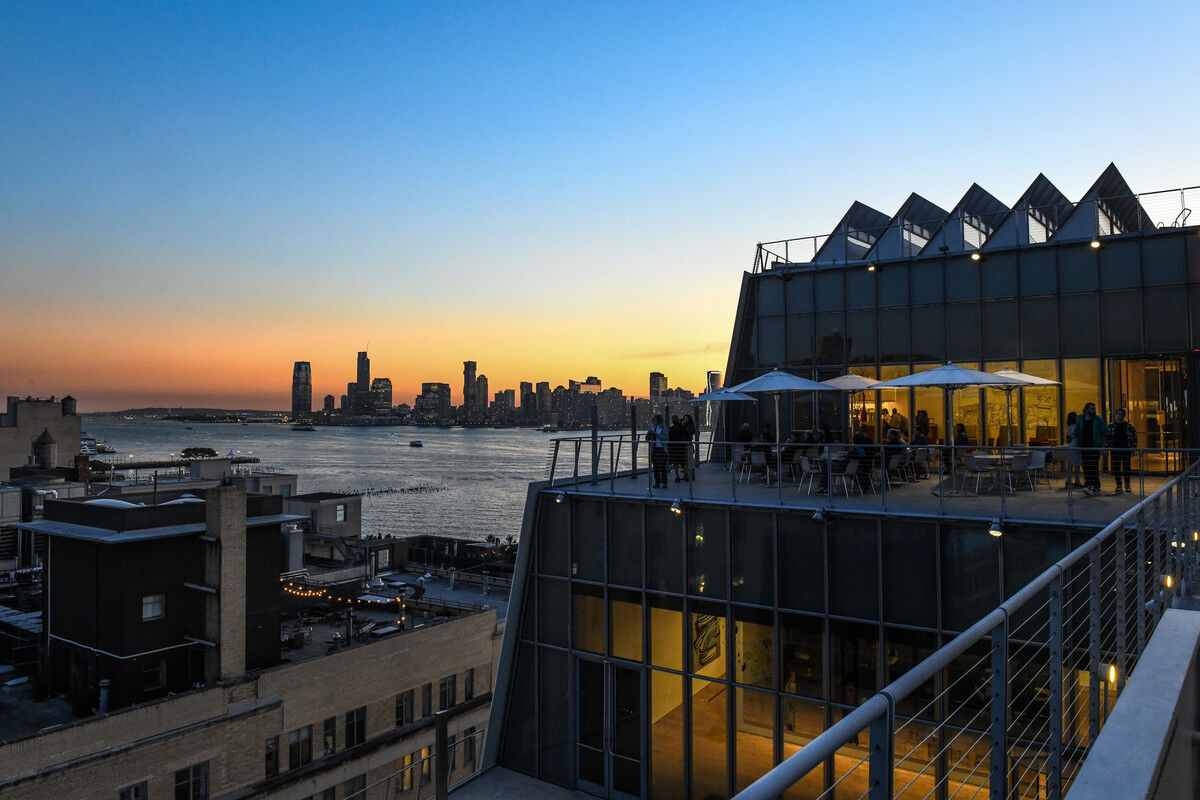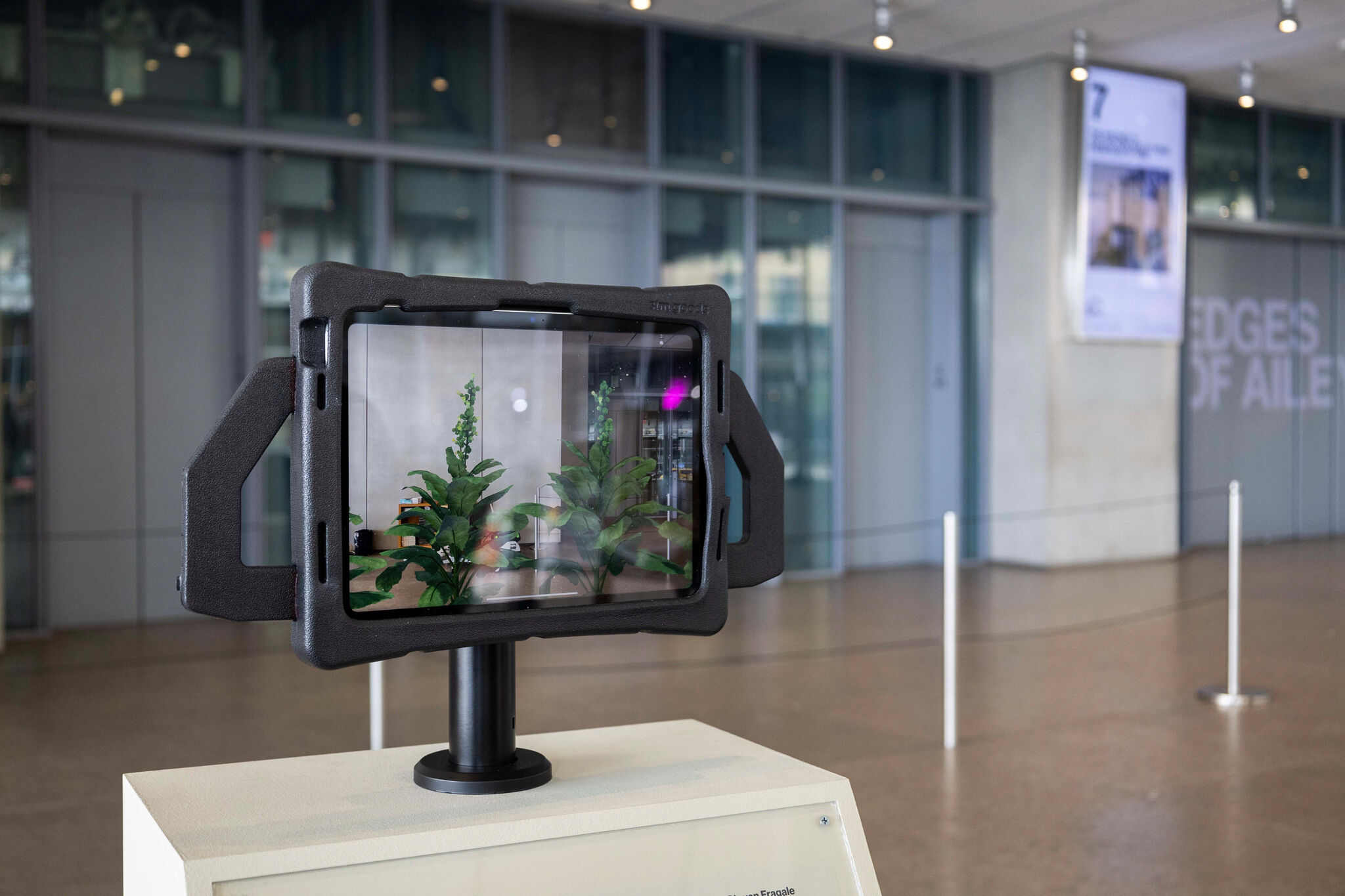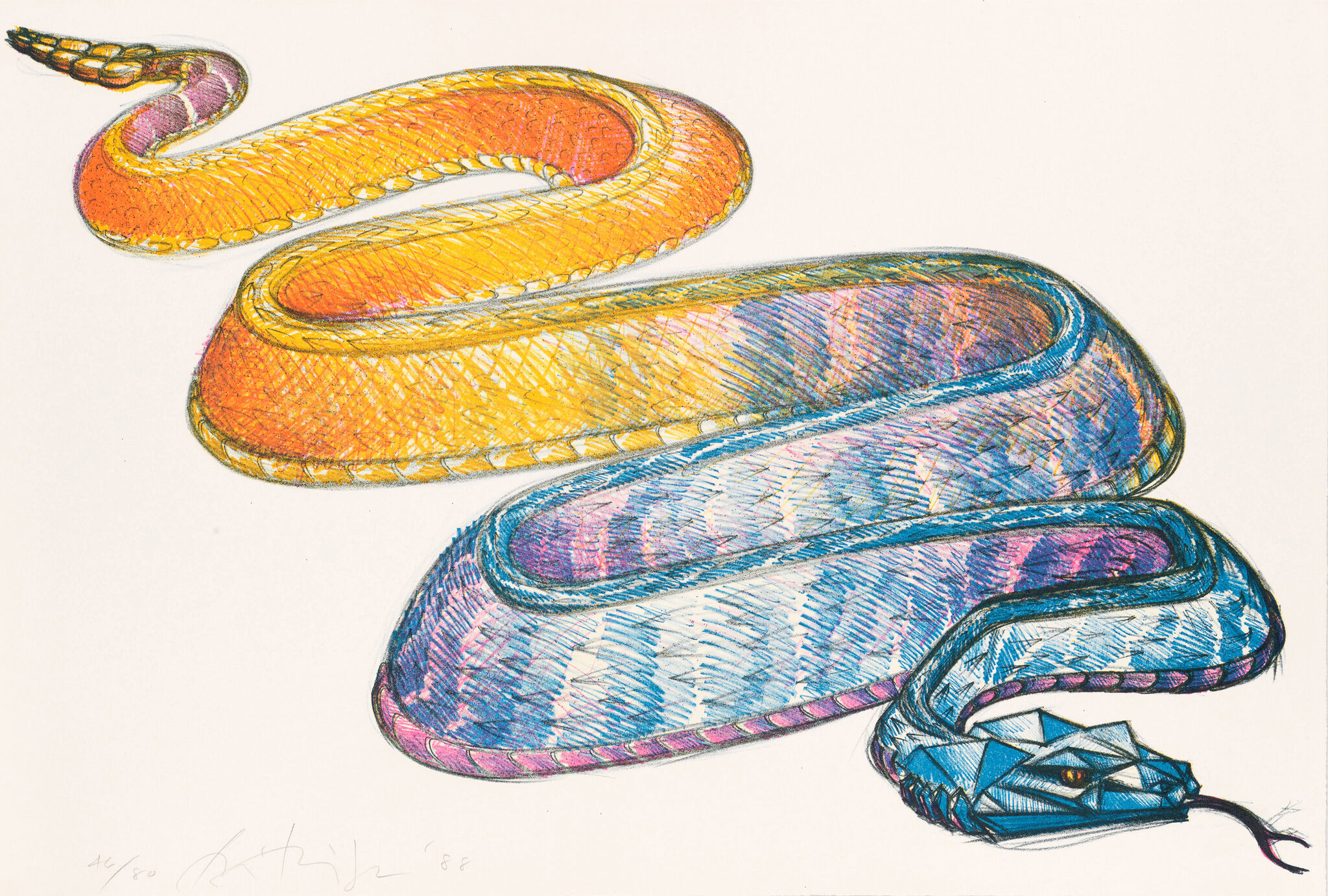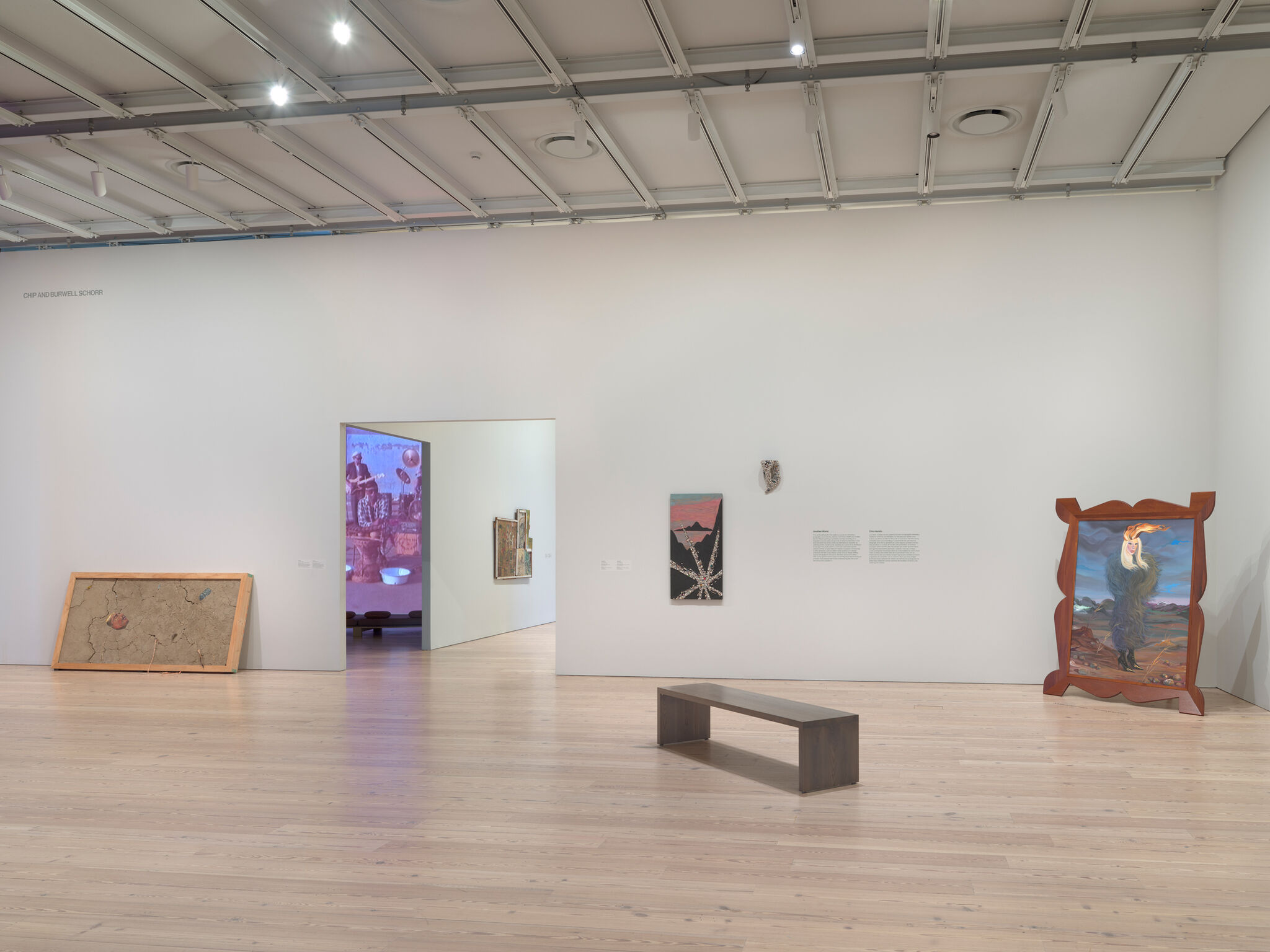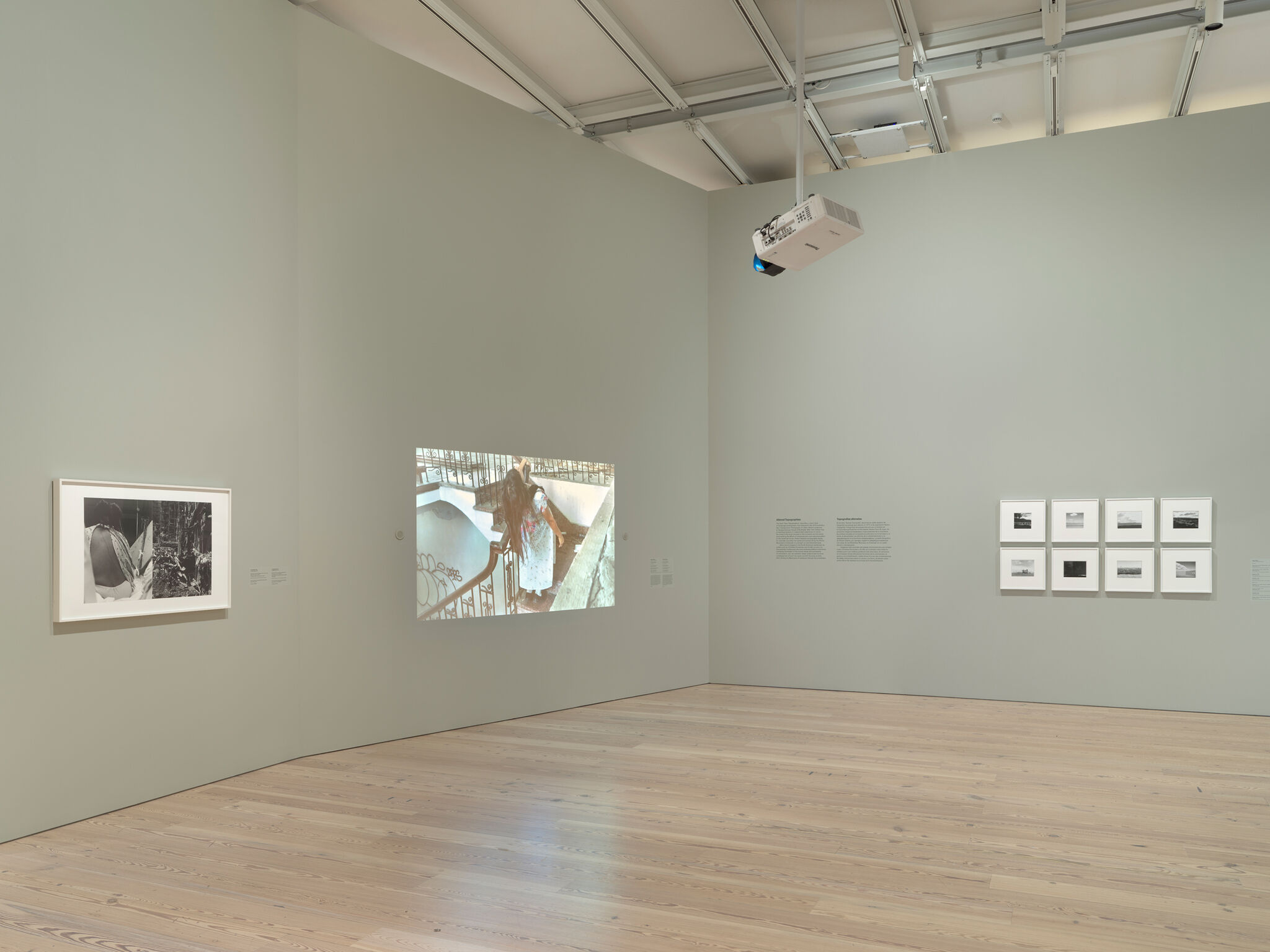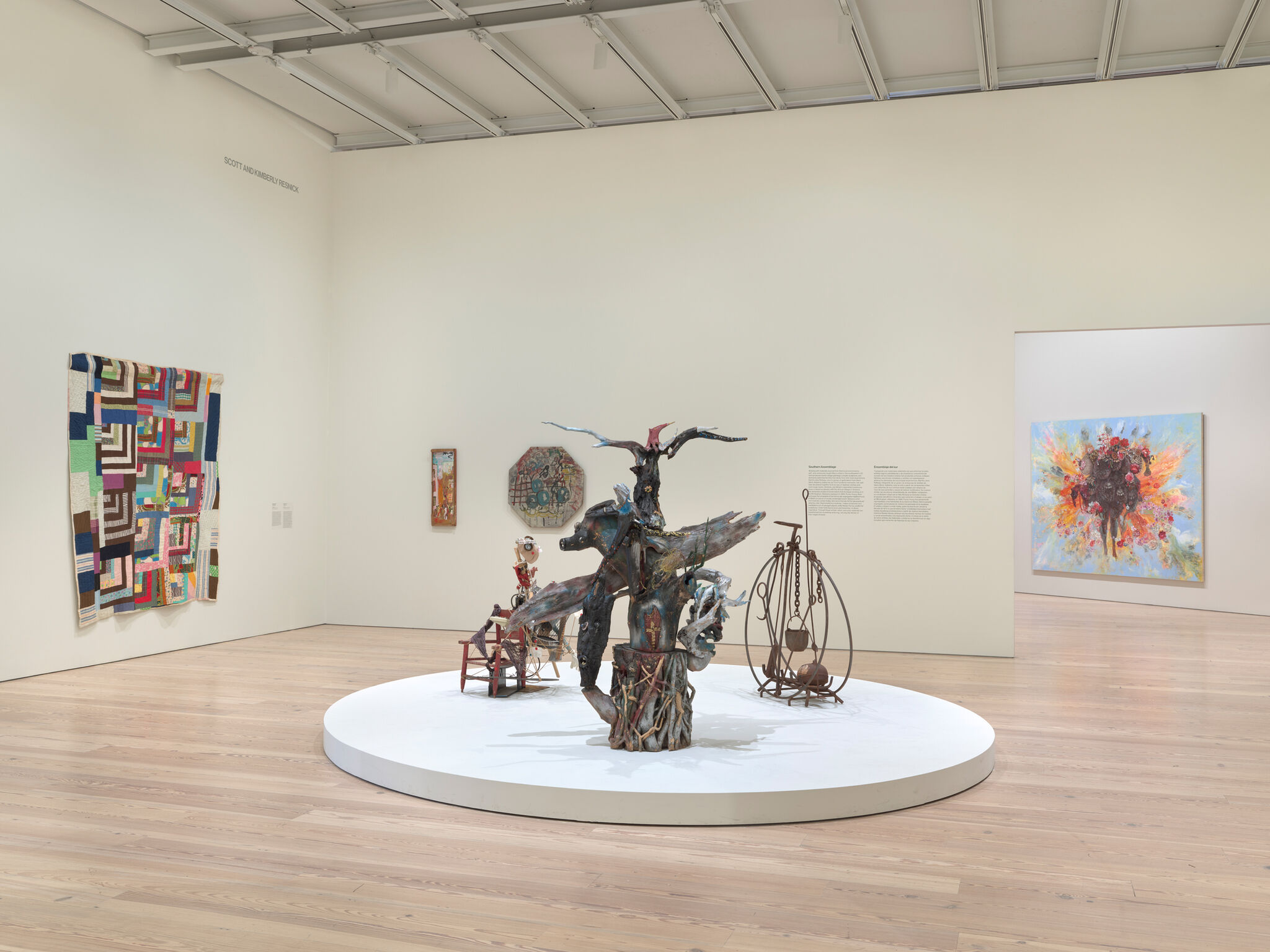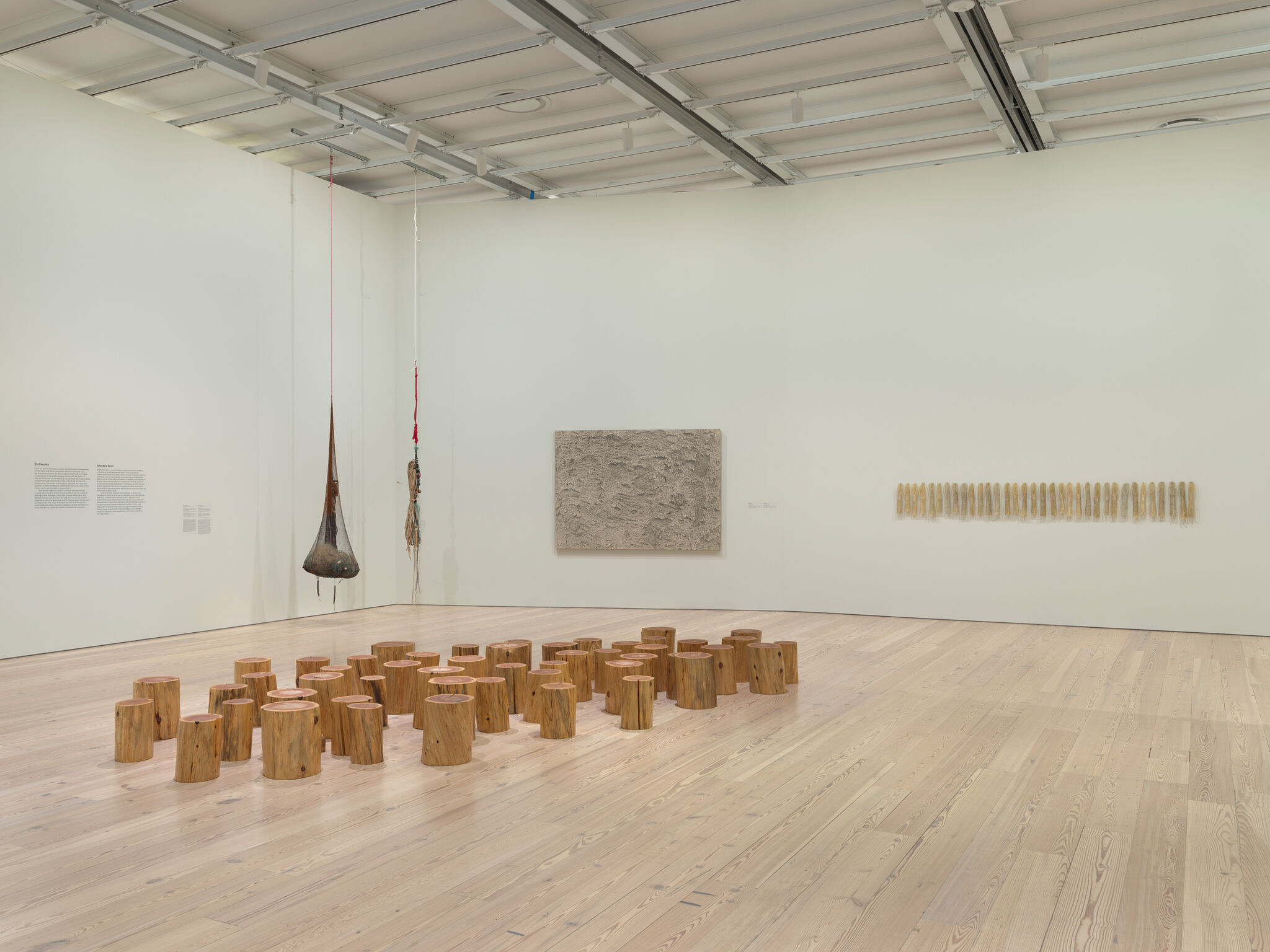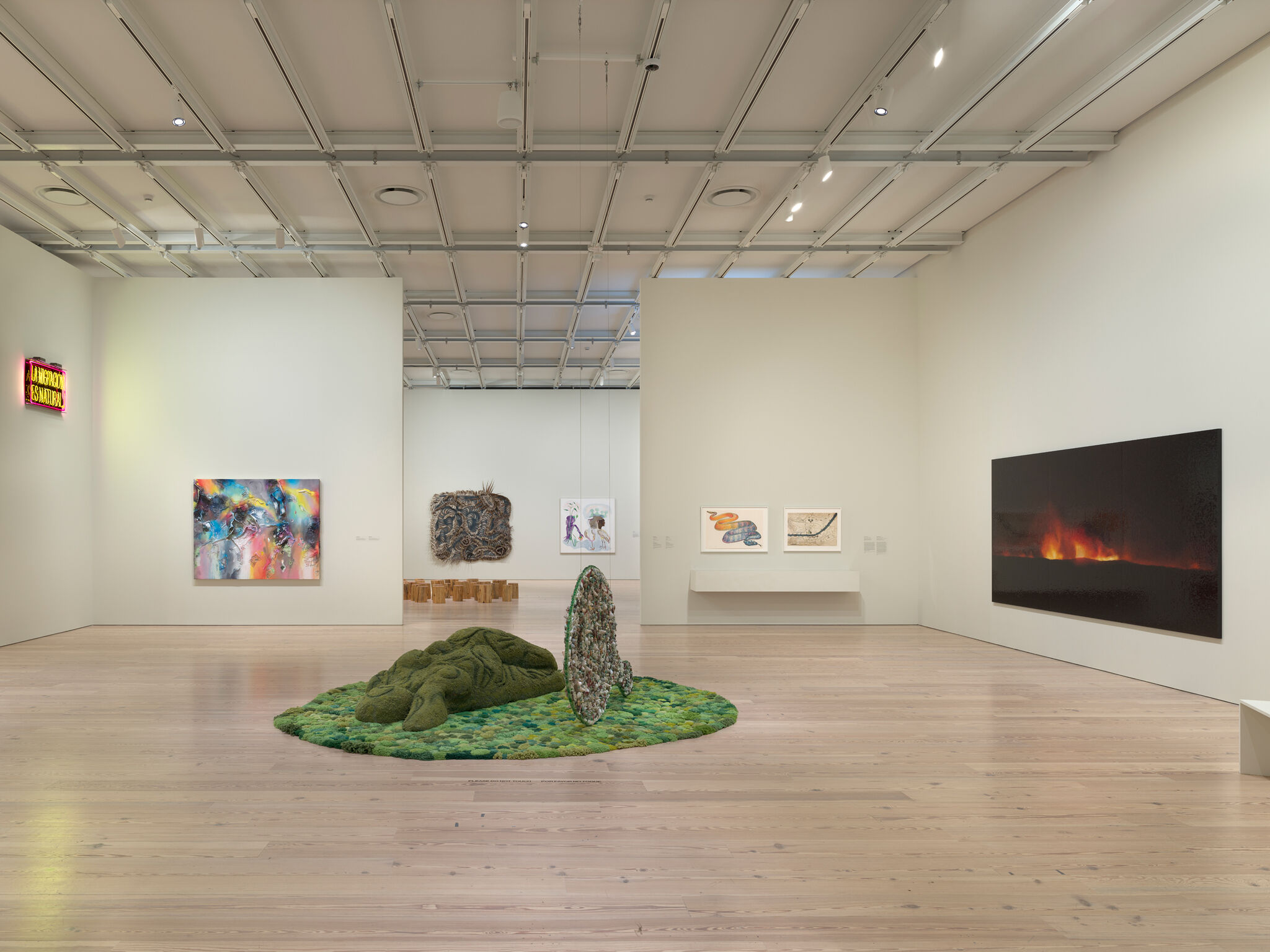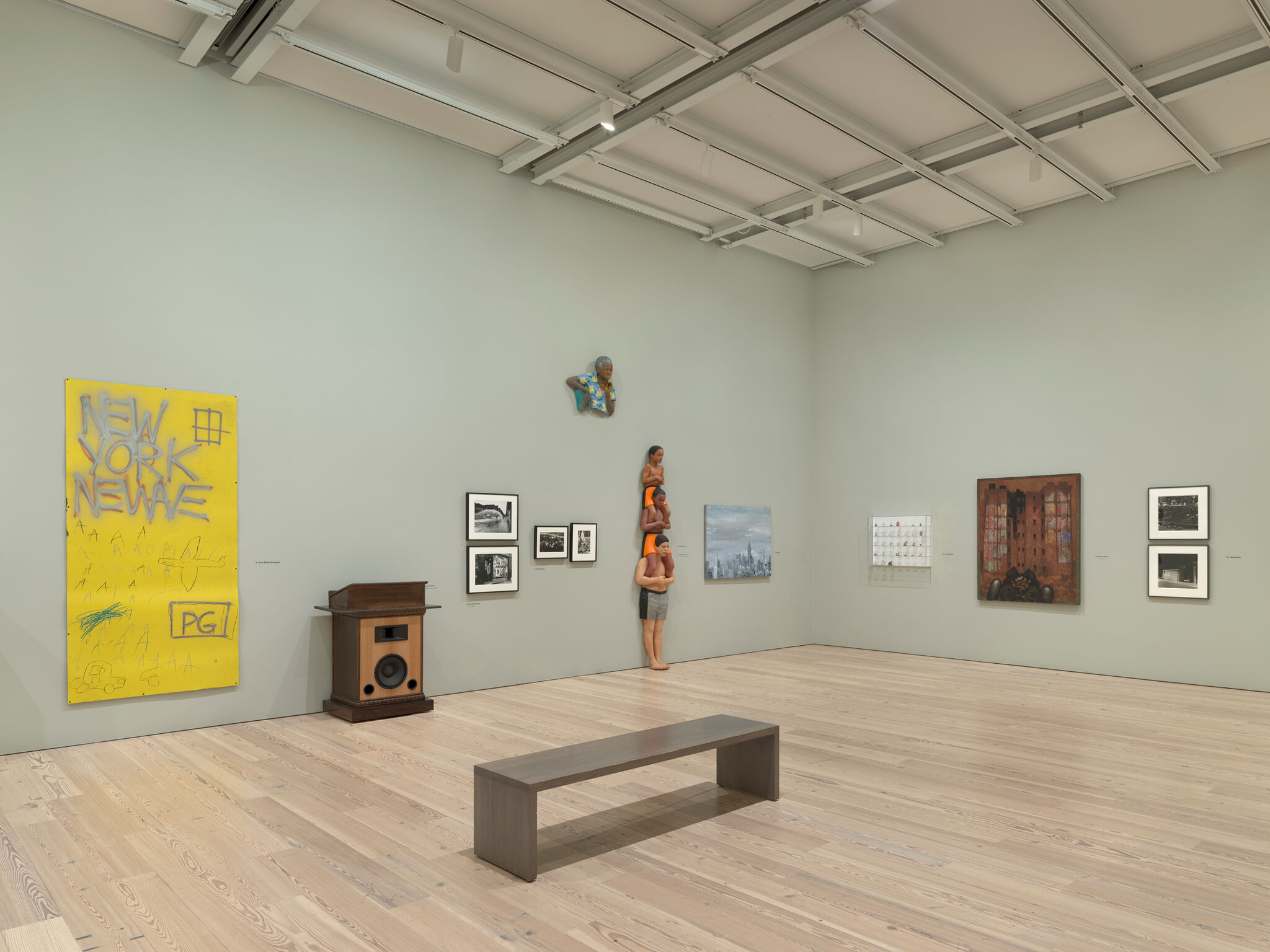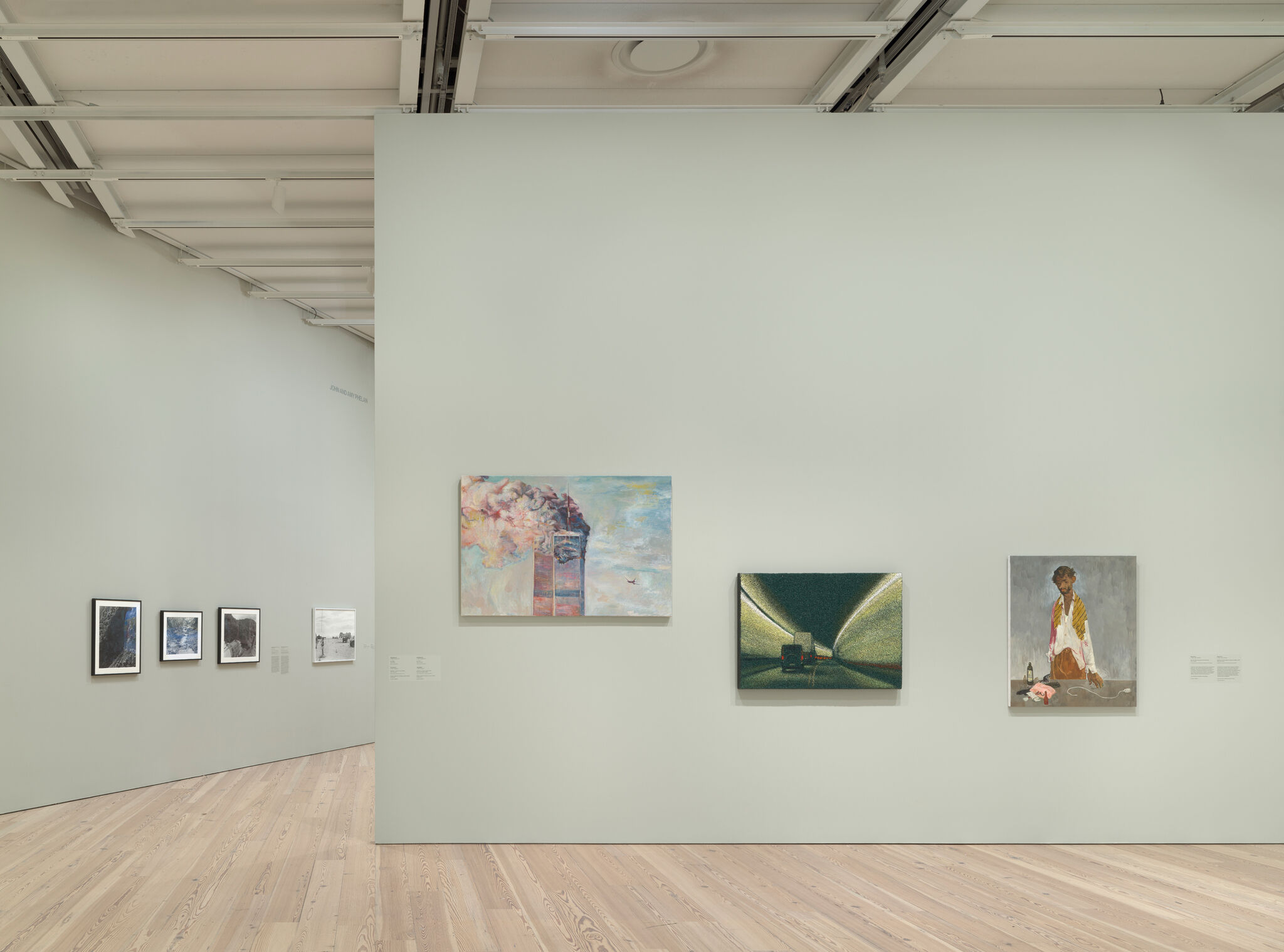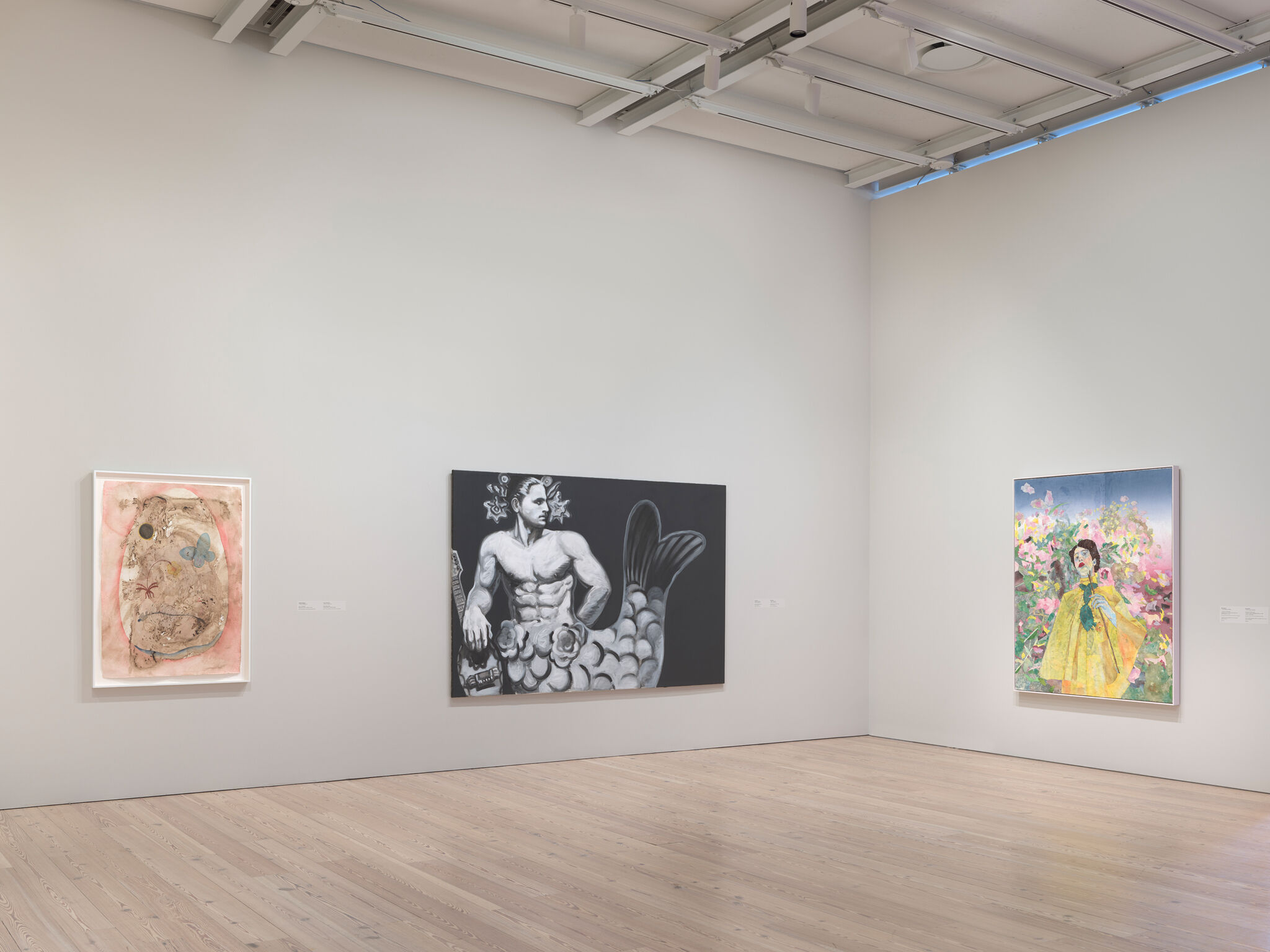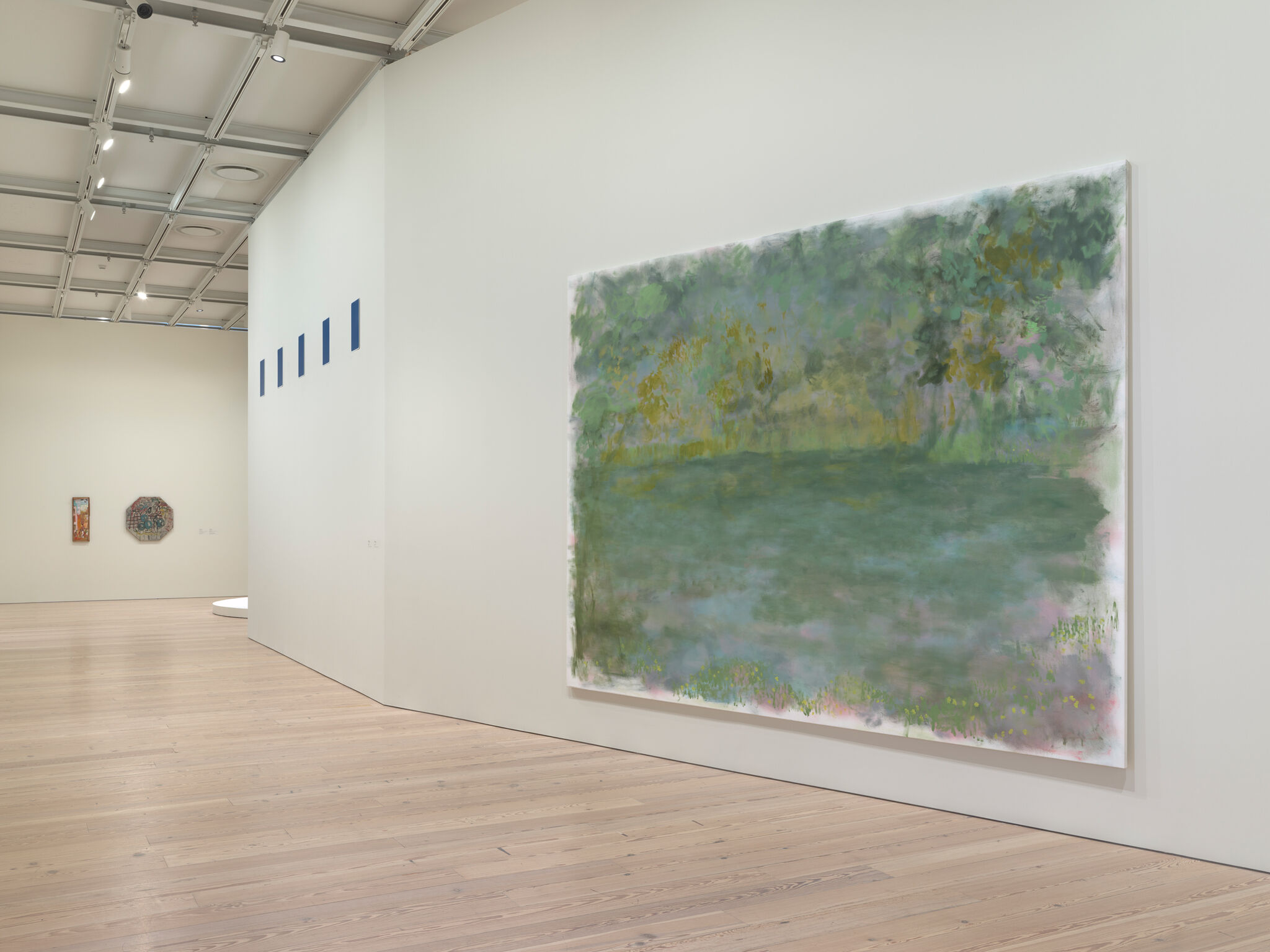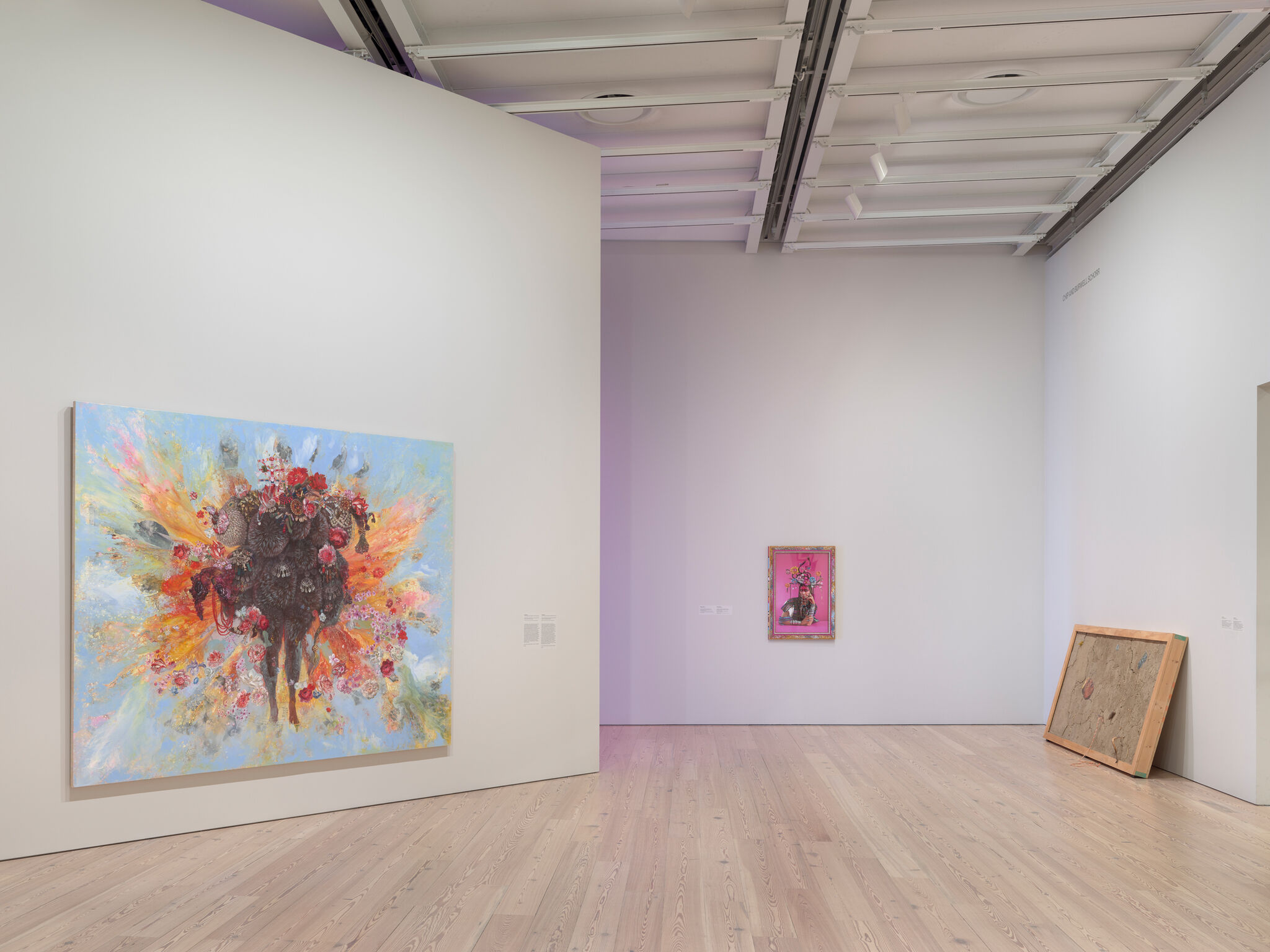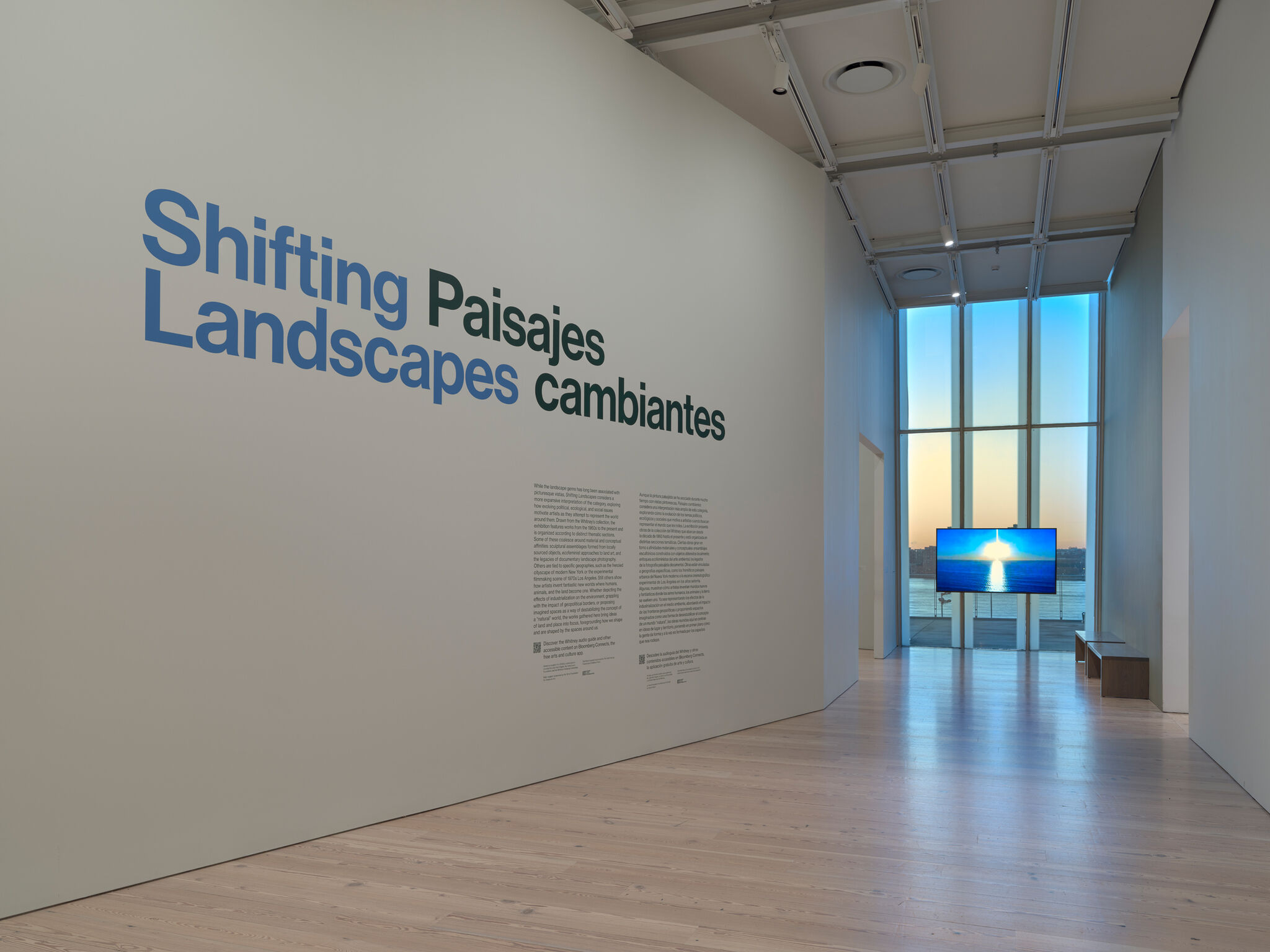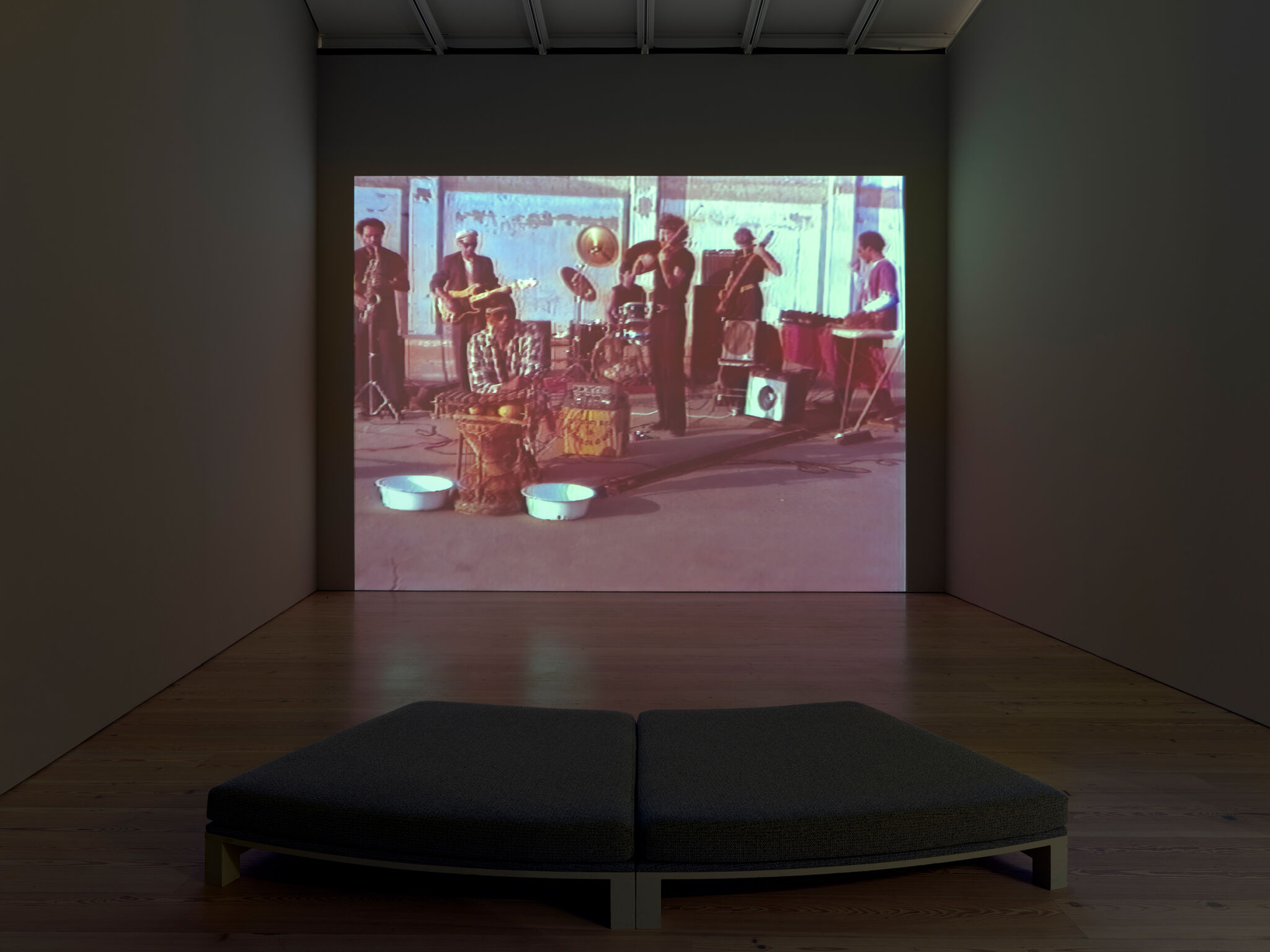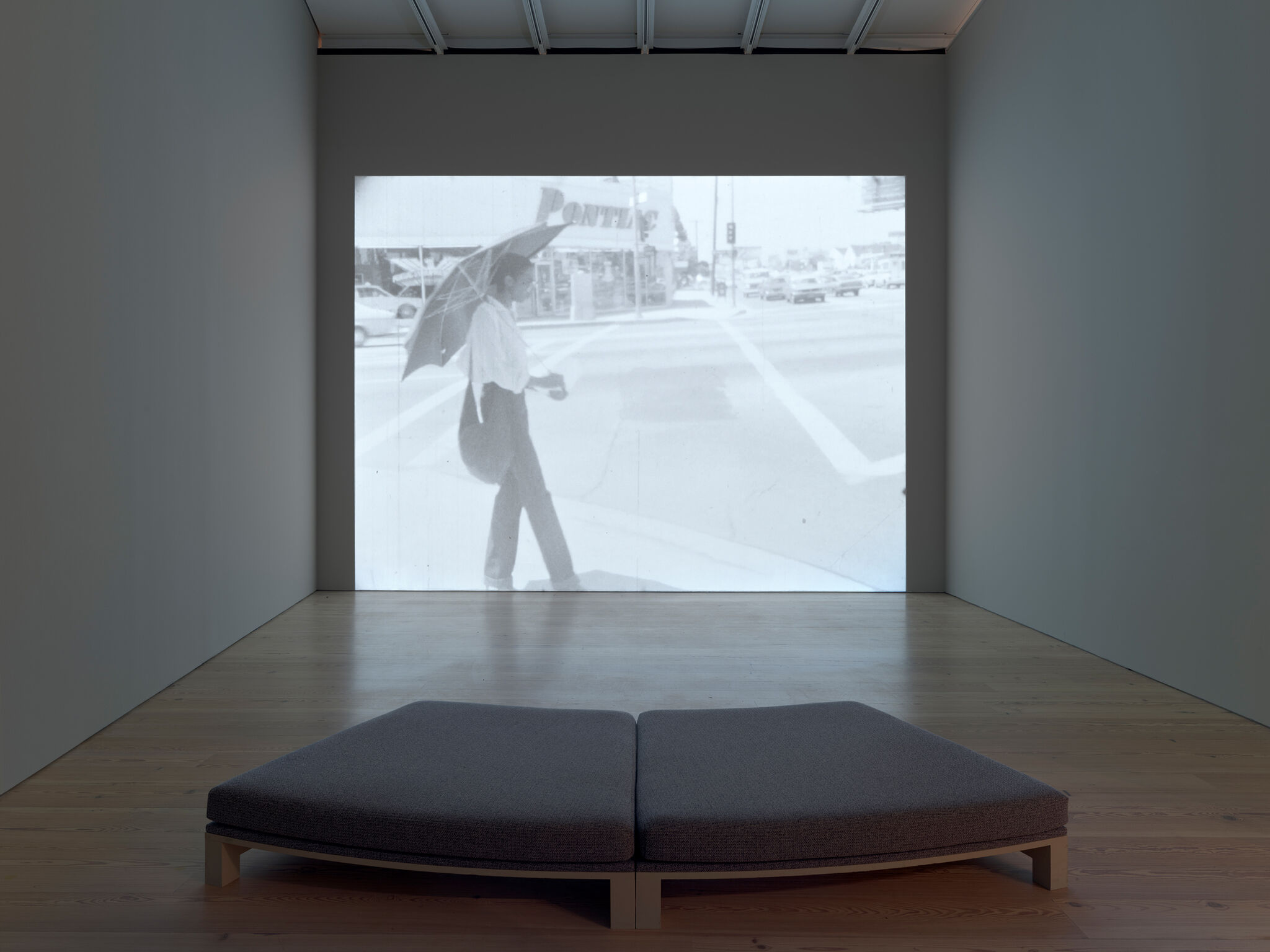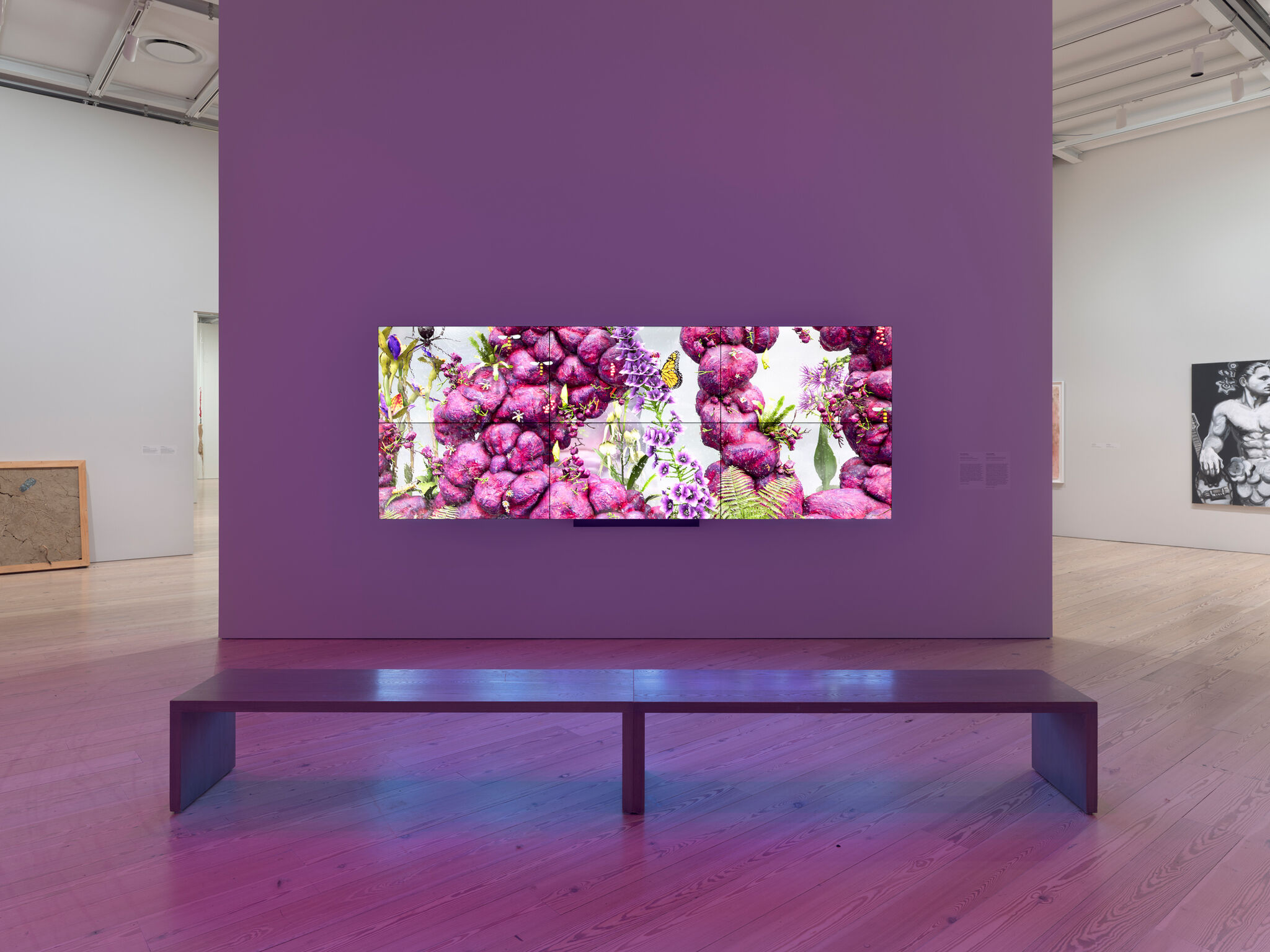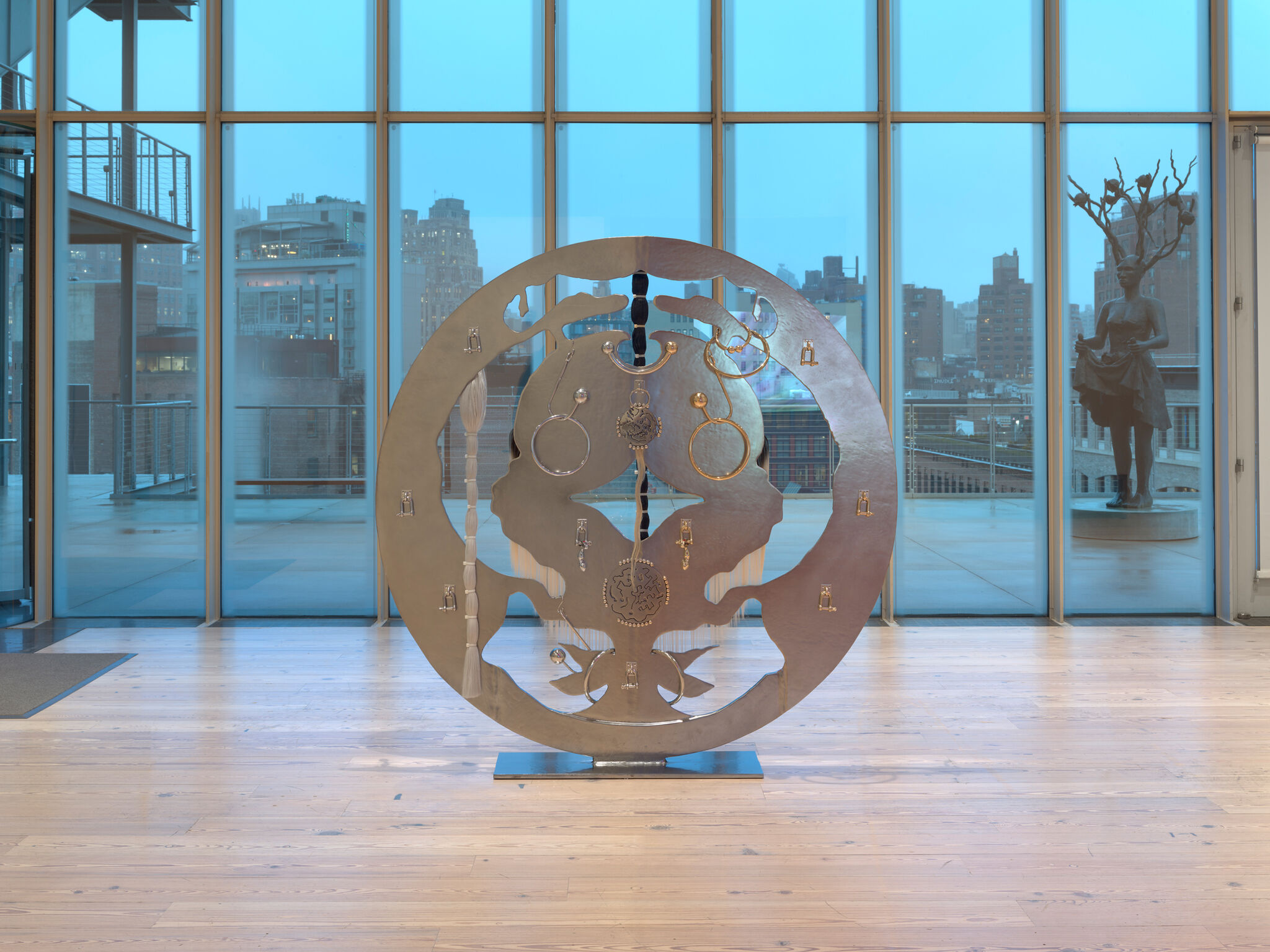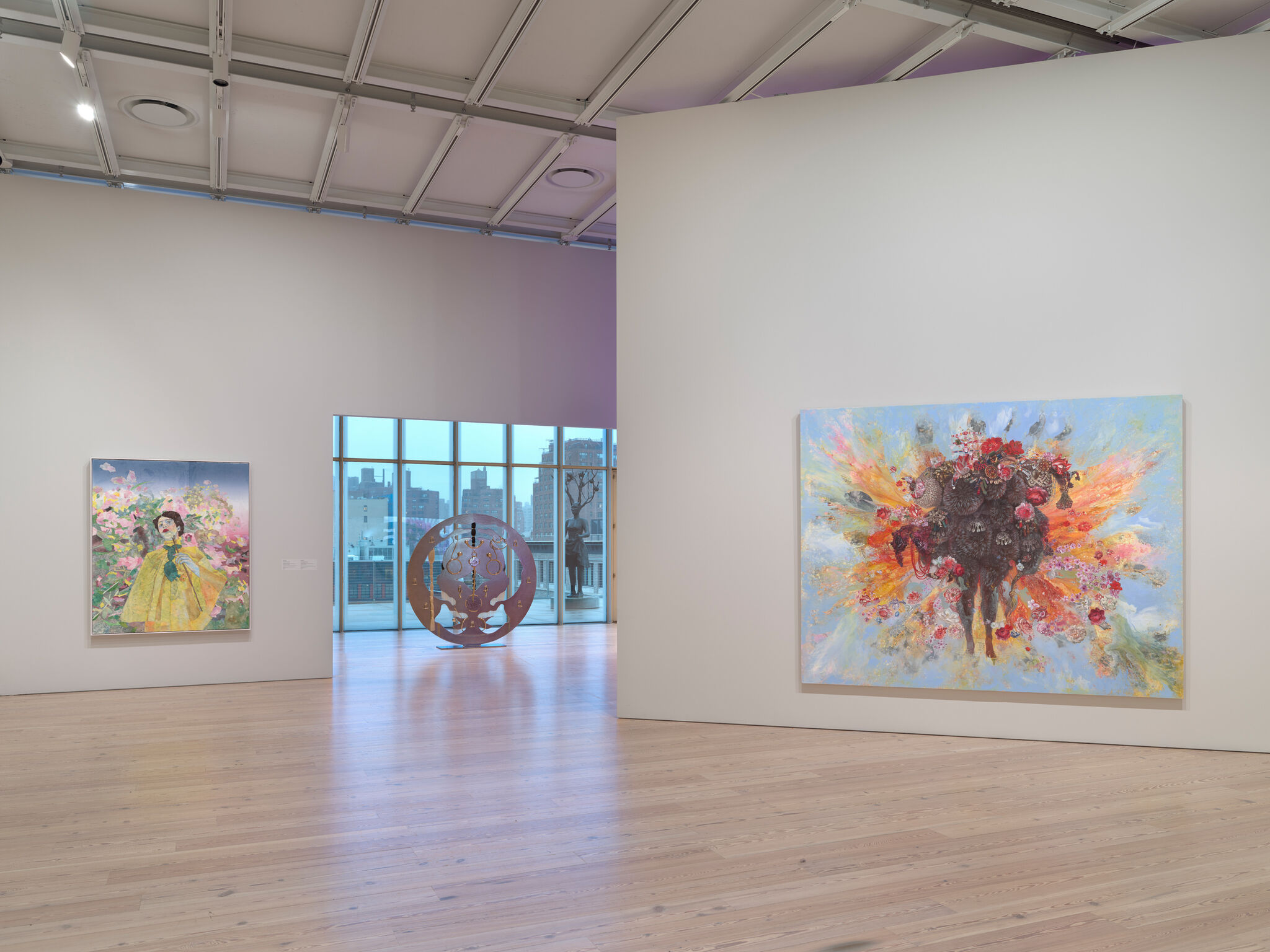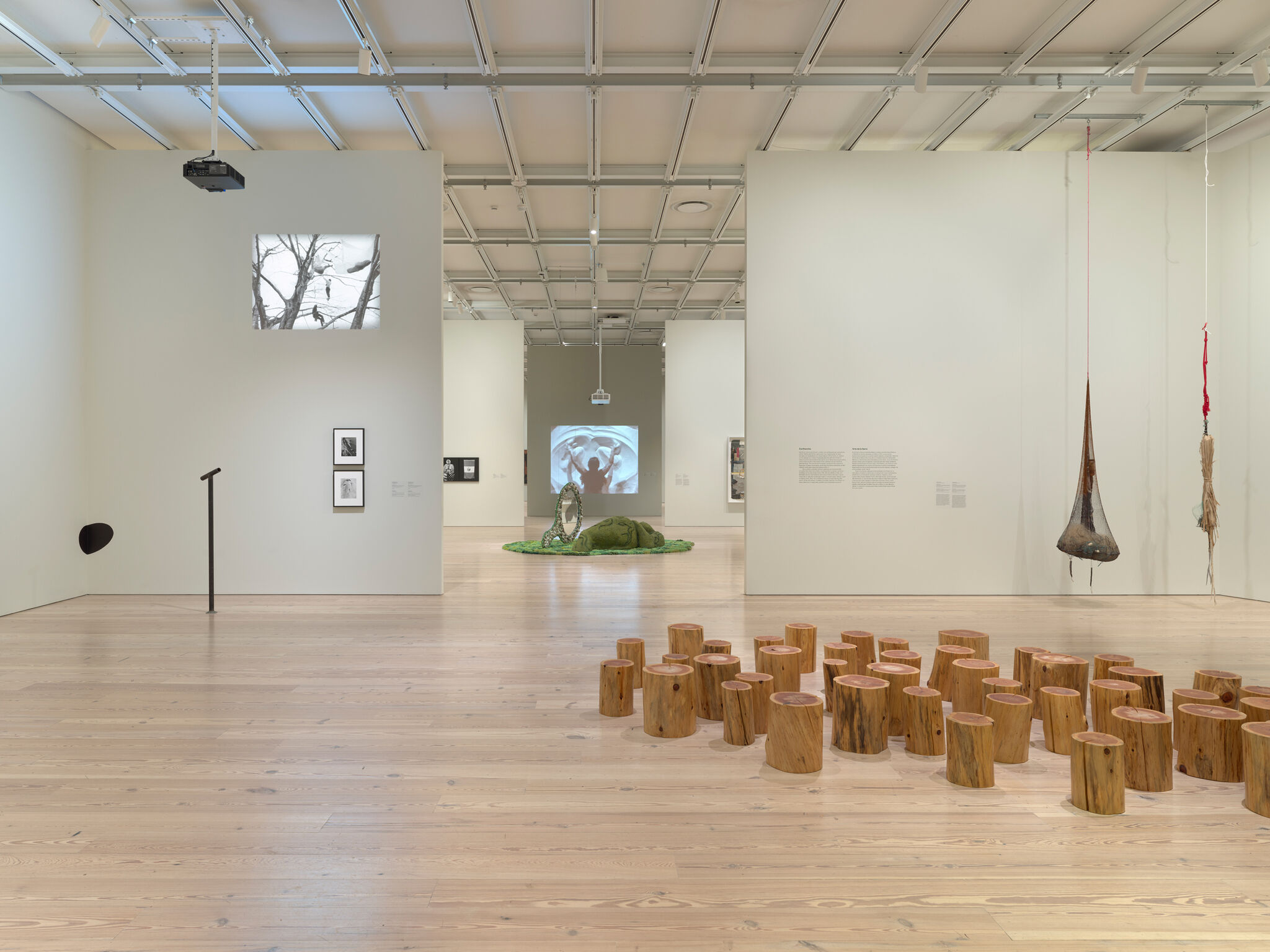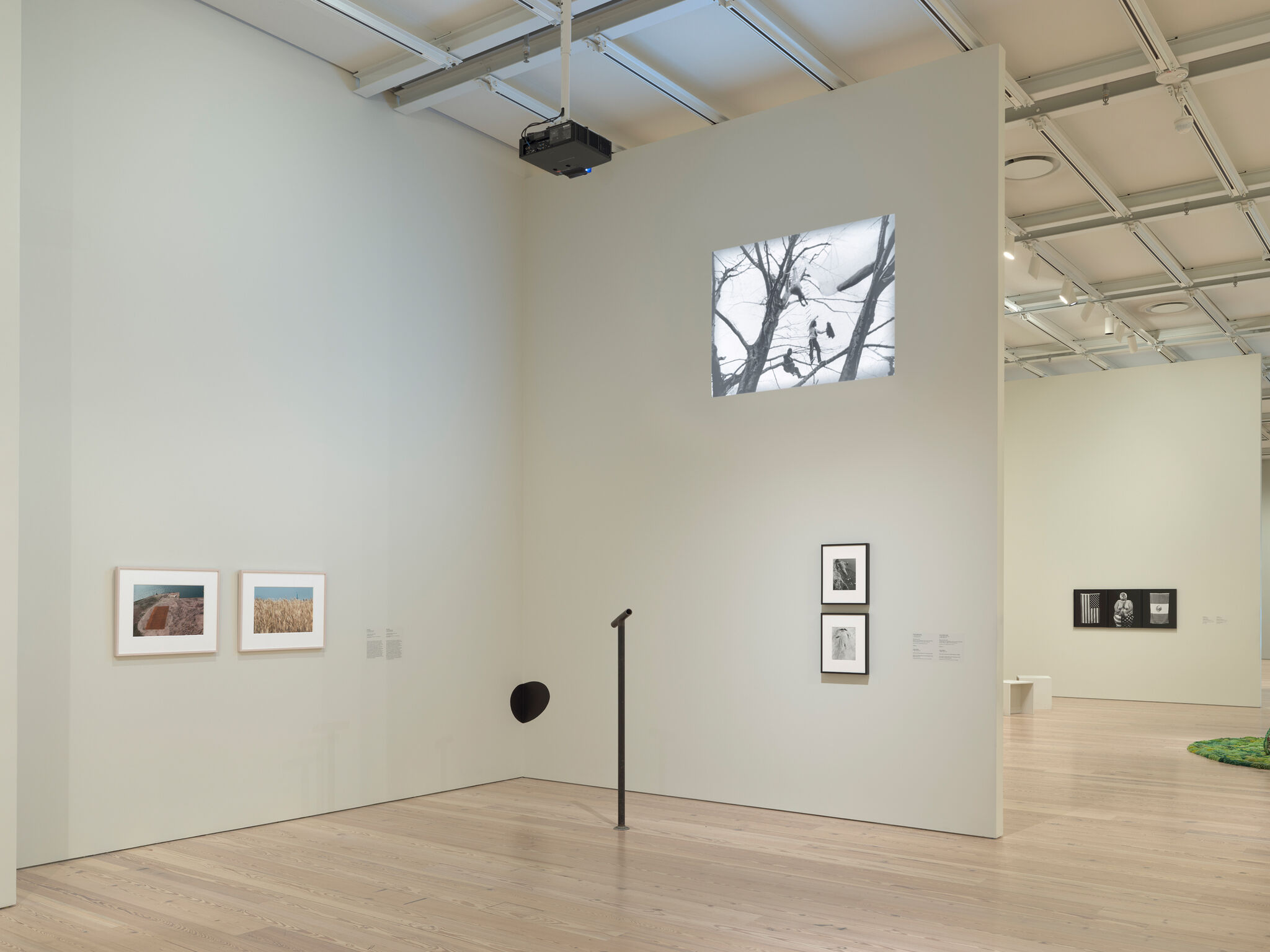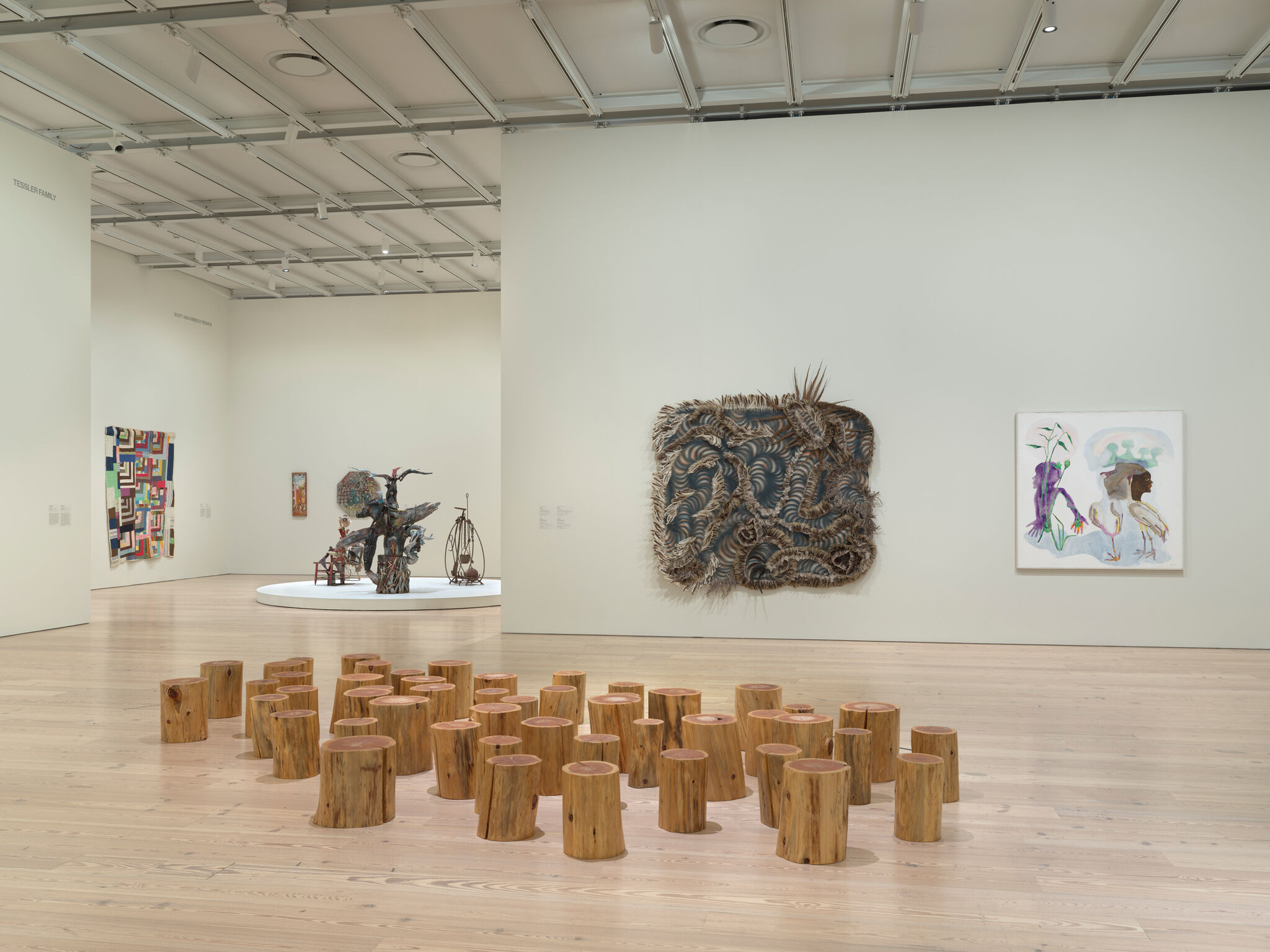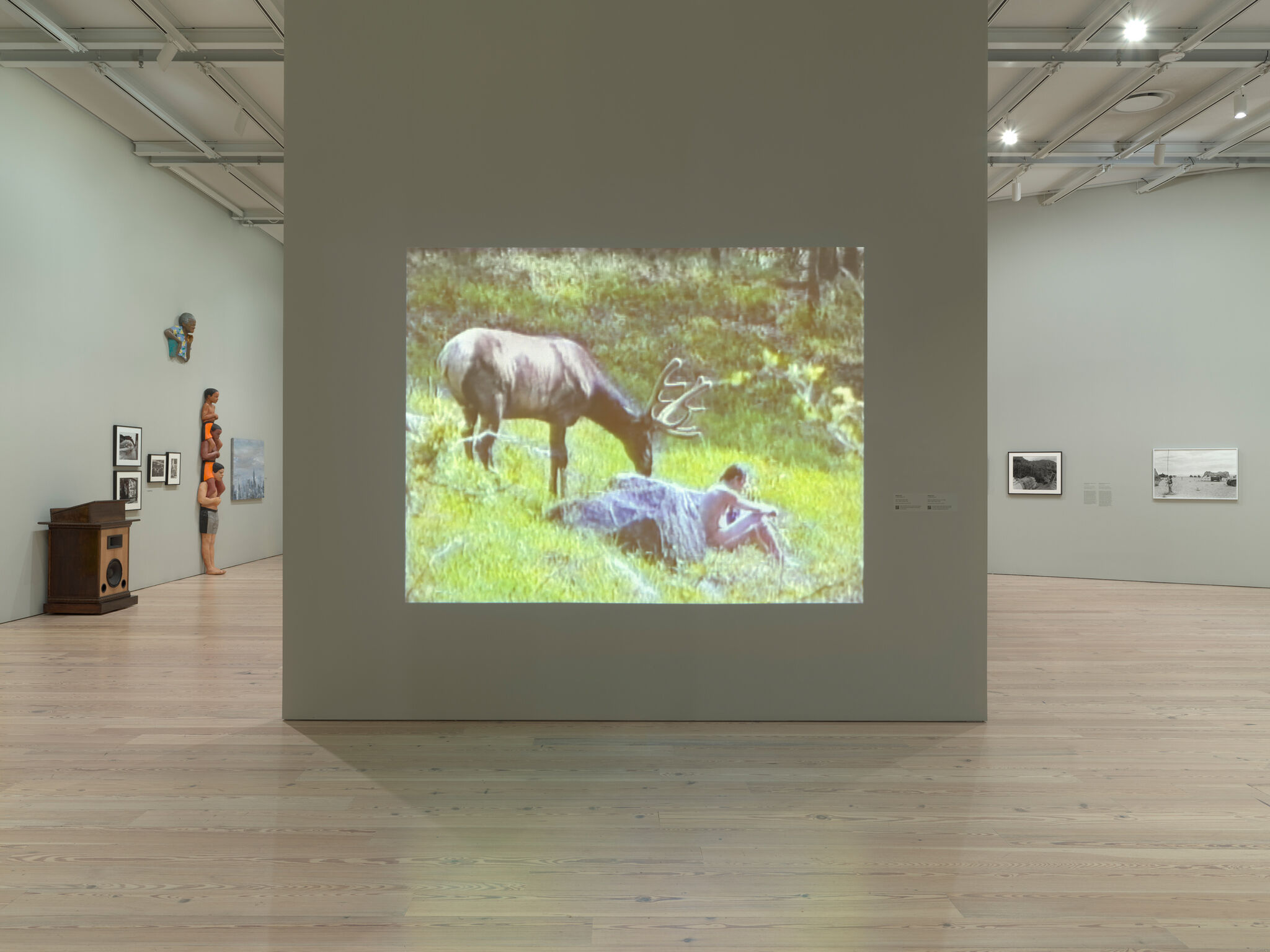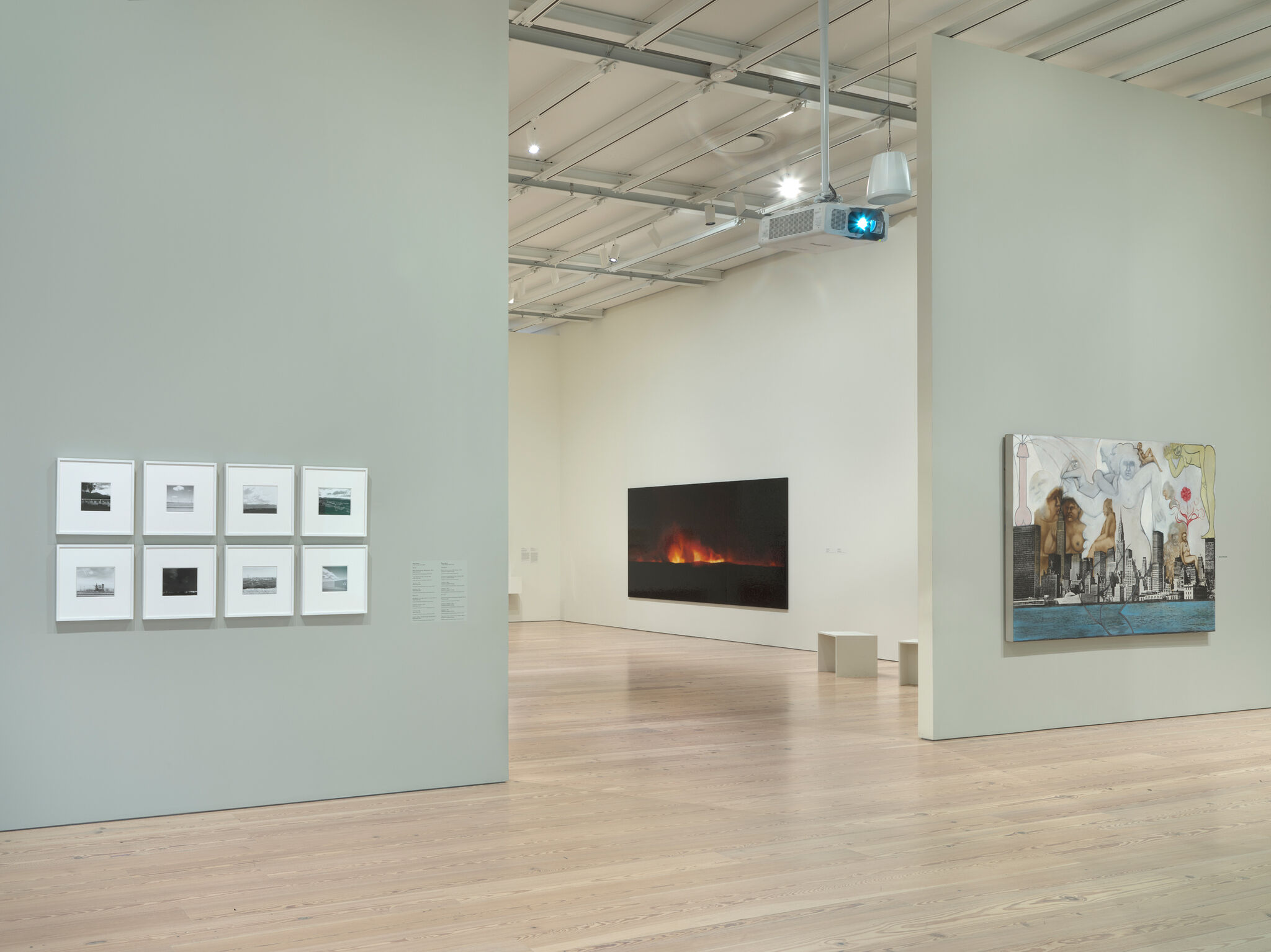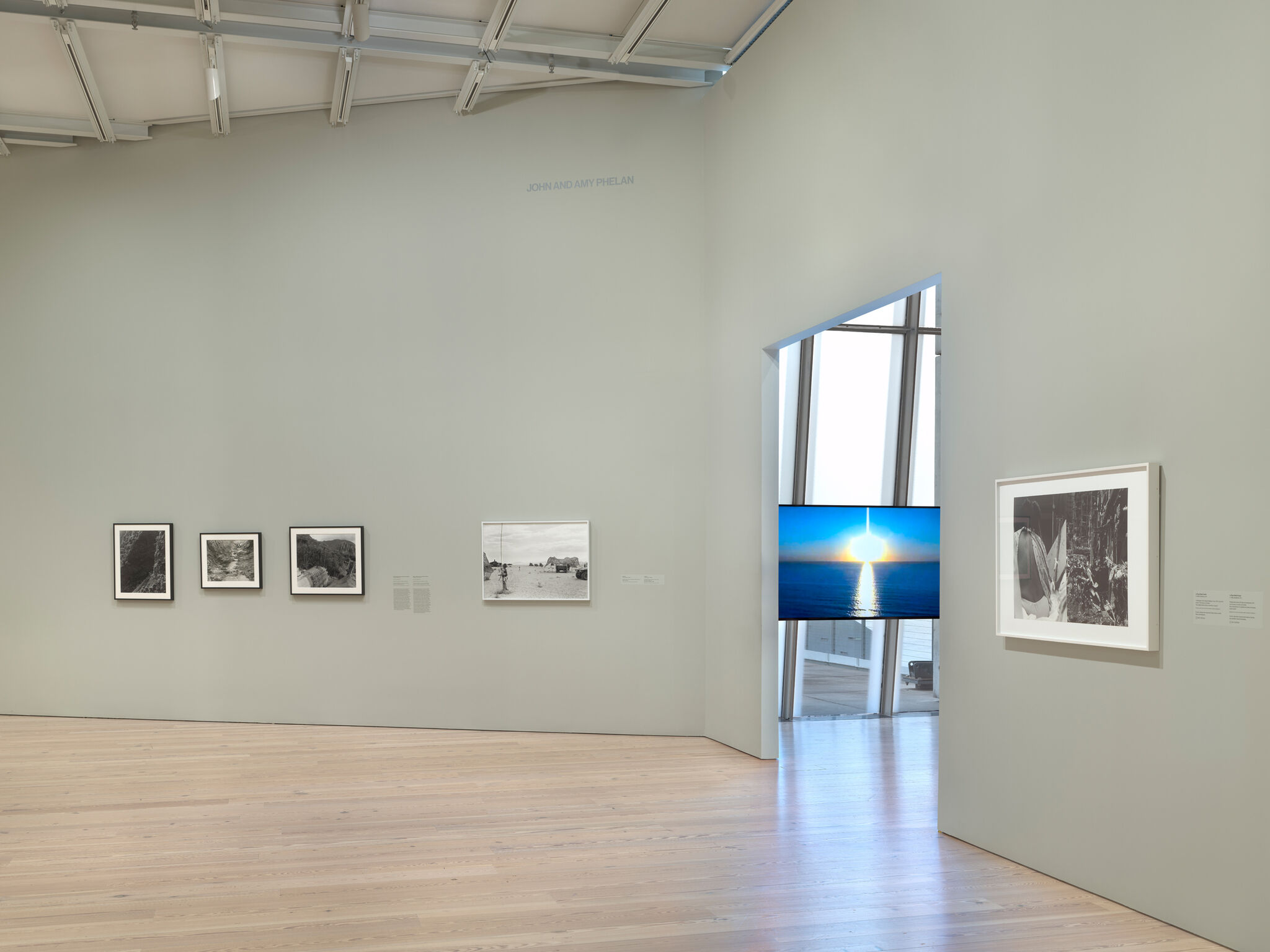On view
Floor 6
Open: Nov 1, 2024–Jan 25, 2026
While the landscape genre has long been associated with picturesque vistas, Shifting Landscapes considers a more expansive interpretation of the category, exploring how evolving political, ecological, and social issues motivate artists as they attempt to represent the world around them. Drawn from the Whitney’s collection, the exhibition features works from the 1960s to the present and is organized according to distinct thematic sections. Some of these coalesce around material and conceptual affinities: sculptural assemblages formed from locally sourced objects, ecofeminist approaches to land art, and the legacies of documentary landscape photography. Others are tied to specific geographies, such as the frenzied cityscape of modern New York or the experimental filmmaking scene of 1970s Los Angeles. Still others show how artists invent fantastic new worlds where humans, animals, and the land become one. Whether depicting the effects of industrialization on the environment, grappling with the impact of geopolitical borders, or proposing imagined spaces as a way of destabilizing the concept of a “natural” world, the works gathered here bring ideas of land and place into focus, foregrounding how we shape and are shaped by the spaces around us.
Shifting Landscapes is organized by Jennie Goldstein, Jennifer Rubio Associate Curator of the Collection; Marcela Guerrero, DeMartini Family Curator; Roxanne Smith, Senior Curatorial Assistant; with Angelica Arbelaez, Rubio Butterfield Family Fellow; with thanks to Araceli Bremauntz-Enriquez and J. English Cook for research support.
Review accessibility information before visiting Shifting Landscapes.
Major support for Shifting Landscapes is provided by Judy Hart Angelo, the Henry Luce Foundation, and the Whitney’s National Committee.
Significant support is provided by the Terra Foundation for American Art.
Generous support is provided by The Keith Haring Foundation Exhibition Fund.

En español
Aunque la pintura paisajista se ha asociado durante mucho tiempo con vistas pintorescas, Paisajes cambiantes considera una interpretación más amplia de esta categoría, explorando cómo la evolución de los temas políticos, ecológicos y sociales motiva a artistas cuando buscan representar el mundo que les rodea. La exhibición presenta obras de la colección del Whitney que abarcan desde la década de 1960 hasta el presente y está organizada en distintas secciones temáticas. Ciertas obras giran en torno a afinidades materiales y conceptuales: ensamblajes escultóricos construidos con objetos obtenidos localmente, enfoques ecofeministas del arte ambiental, los legados de la fotografía paisajista documental. Otras están vinculadas a geografías específicas, como los frenéticos paisajes urbanos del Nueva York moderno o la escena cinematográfica experimental de Los Ángeles en los años setenta. Algunas, muestran cómo artistas inventan mundos nuevos y fantásticos donde los seres humanos, los animales y la tierra se vuelven uno. Ya sea representando los efectos de la industrialización en el medio ambiente, abordando el impacto de las fronteras geopolíticas o proponiendo espacios imaginados como una forma de desestabilizar el concepto de un mundo “natural”, las obras reunidas aquí se centran en ideas de lugar y territorio, poniendo en primer plano cómo la gente da forma y a la vez es formada por los espacios que nos rodean.
Audio
Chelsey Pellot, Assistant Manager of Foundation & Government Relations, writes about the perfect soundtrack for Shifting Landscapes.
With its themes of cultural resistance, reclamation, and preservation, Bad Bunny’s 2025 album, DeBÍ TiRAR MáS FOToS, is the perfect soundtrack to Shifting Landscapes. Song by song, it directly overlaps with the exhibition’s core issues, offering a unique sonar and visual experience when paired together.
The album’s opening track, NUEVAYoL, pays homage to New York City’s influence on Puerto Rican culture, a history explored in Shifting Landscapes’s New York Cityscapes section, which features Nuyorican artists such as Jean-Michel Basquiat, Miguel Luciano, Hiram Maristany, Sophie Rivera, and Rigoberto Torres. These artists demonstrate that the influence goes both ways—Puerto Rico has had an immense impact on how we experience the Big Apple or la gran manzana.
The song LO QUE LE PASÓ A HAWAii draws parallels between Hawai’i and Puerto Rico’s complex relationships to the United States. It provides a somber soundtrack to Piliāmo‘o’s photographs depicting how the multiyear construction of the H-3 Interstate in O‘ahu, initiated by the U.S. government, impacted local communities.
PERFuMITO NUEVO captures the essence of the other-worldly figure portrayed in Dalton Gata’s painting I Don’t Need You To Be Warm with its ethereal sound and dreamlike lyrics. Wearing a billowing furry coat, shiny black stiletto boots, and a crown of fire atop flowing blond hair, “The figure in Gata’s painting fashions a sense of self-confidence that is alluring,” the exhibition’s curator, Marcela Guerrero, observes. “She might very well be who Bad Bunny is singing about when he says ‘No parece leo ni escorpio; Pa mí que ella tiene su propio signo; Fría, sentimental, está en temporada de portarse mal.’” (“She doesn’t look like a Leo or Scorpio; I think she has her own sign; cold, sentimental, she’s in the season of misbehaving.”) The exploration of evolving political, ecological, and social issues, and how artists portray the world around them, is the crux of Shifting Landscapes, and mirrors Bad Bunny's similar inspirations and motivations behind his powerful work of art, DeBÍ TiRAR MáS FOToS.
Earthworks
3
Earth art and ecofeminism—artistic and philosophical movements of the 1960s and 1970s—proposed new frameworks for how we view and experience our shared planet. While Earth art marked a conceptual turn toward engaging directly with the forms of nature and the land, ecofeminism put forward ideas about appreciating and protecting the environment within anticolonial and feminist perspectives. The works in this gallery represent the roots and legacies of these movements, exploring the interconnectivity of the natural world and humanity’s place within it.
Here artists celebrate nature’s vastness and ephemerality in works that stand as artistic counterpoints to human-centered thinking. Some, including Carlos Villa, Gordon Matta-Clark, and Michelle Stuart, deal directly with natural forms and use organic materials or else the landscape itself in diverse ways. Others, such as Nancy Holt, offer more embodied ways of experiencing the world, while still others, including Carolina Caycedo and Maya Lin, draw attention to regionally specific environmental concerns.
Artists
- Robert Adams
- Yuji Agematsu
- Laura Aguilar
- John Ahearn
- Felipe Baeza
- Firelei Báez
- Melvonna Ballenger
- Orian Barki
- Jean-Michel Basquiat
- Meriem Bennani
- María Berrío
- Diane Burns
- Jenny Calivas
- Carolina Caycedo
- Enrique Chagoya
- Tseng Kwong Chi
- Arch Connelly
- Agnes Denes
- Jane Dickson
- Chioma Ebinama
- rafa esparza
- Christina Fernandez
- Teresita Fernández
- Steven Fragale
- LaToya Ruby Frazier
- Dalton Gata
- Aaron Gilbert
- Martine Gutierrez
- Keith Haring
- Bessie Harvey
- Lonnie Holley
- Nancy Holt
- Pao Houa Her
- Donna Huanca
- Peter Hujar
- Suzanne Jackson
- Ulysses Jenkins
- Luis Jimenez
- Michael Joo
- Sonya Kelliher-Combs
- An-My Lê
- Maya Lin
- Miguel Luciano
- James Luna
- Guadalupe Maravilla
- Hiram Maristany
- Leslie Martinez
- Patrick Martinez
- Gordon Matta-Clark
- Keith Mayerson
- Park McArthur
- Ana Mendieta
- Amalia Mesa-Bains
- Mundo Meza
- Alan Michelson
- Troy Michie
- Joe Minter
- Kenji Nakahashi
- Martha Jane Pettway
- Piliāmo‘o
- Piliāmo'o
- Chuck Ramirez
- Sophie Rivera
- Alison Saar
- David Benjamin Sherry
- Trevor Shimizu
- Nicole Soto Rodríguez
- Anita Steckel
- Michelle Stuart
- Kunié Sugiura
- Tabboo!
- Salman Toor
- Rigoberto Torres
- Theo Triantafyllidis
- Artie Vierkant
- Carlos Villa
- Emmi Whitehorse
- Martin Wong
- Purvis Young

